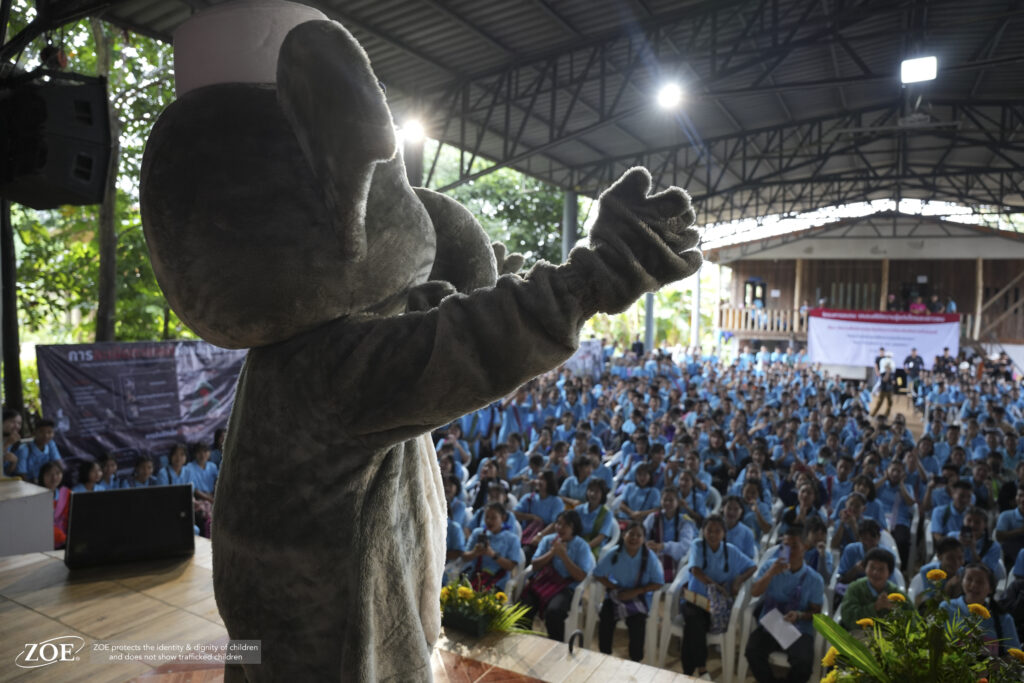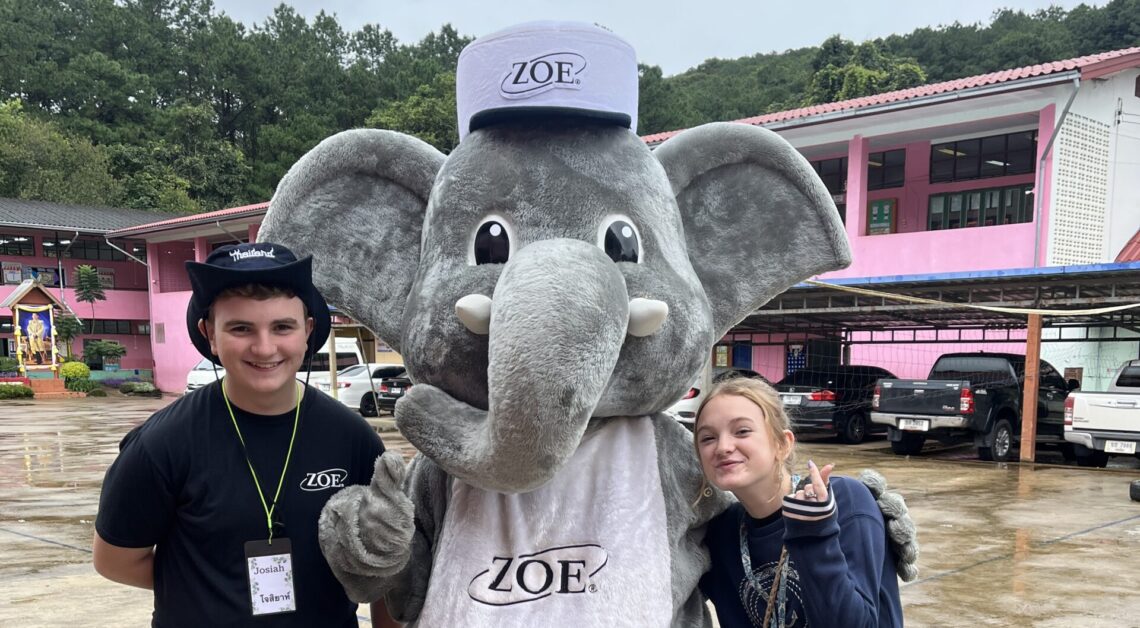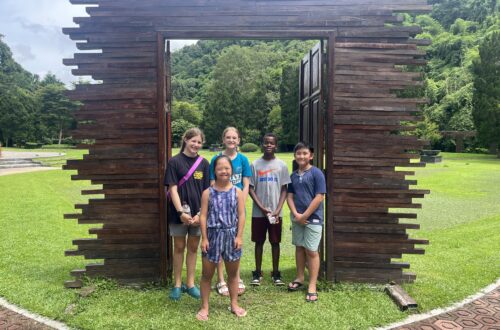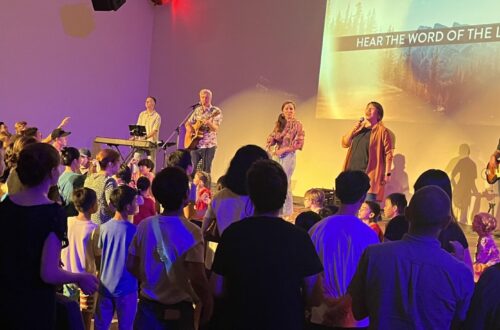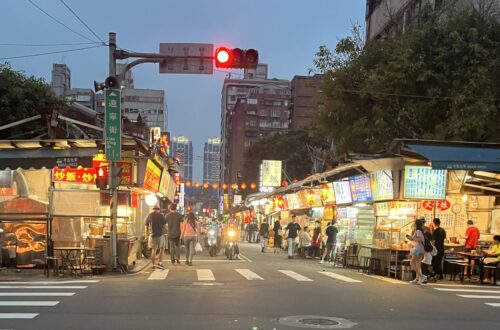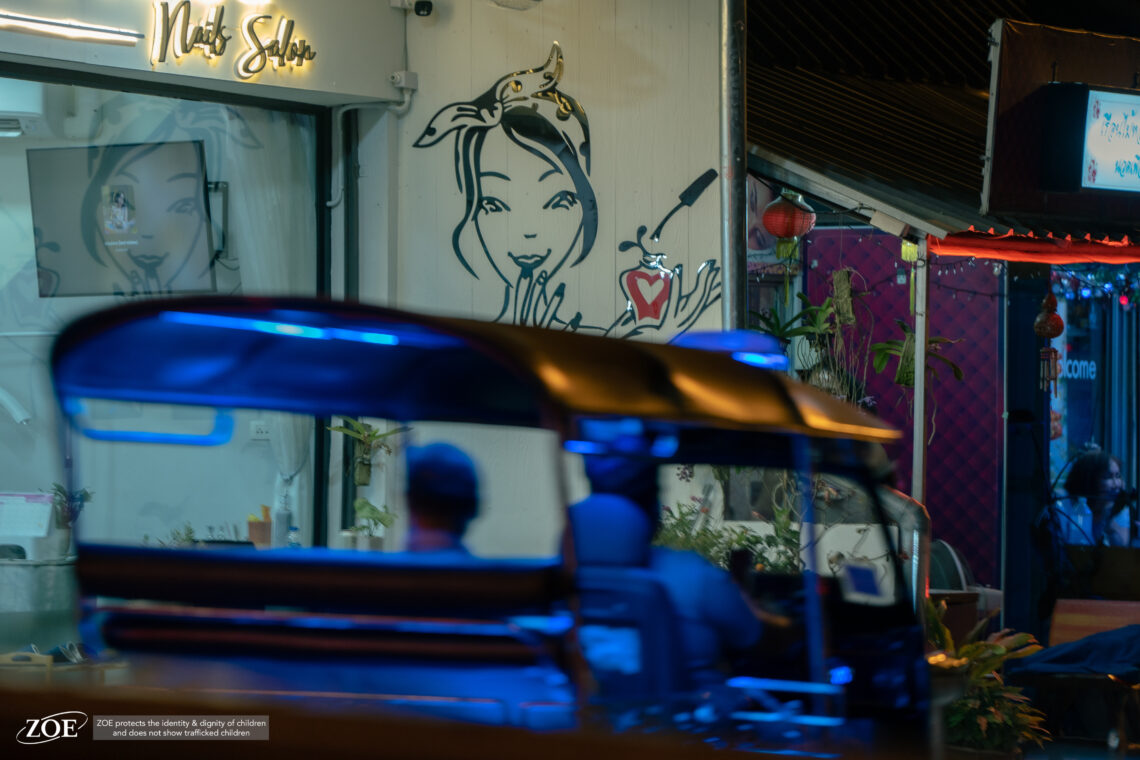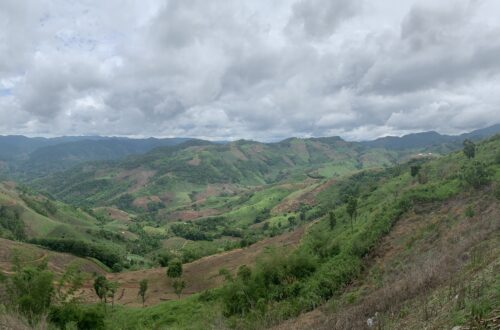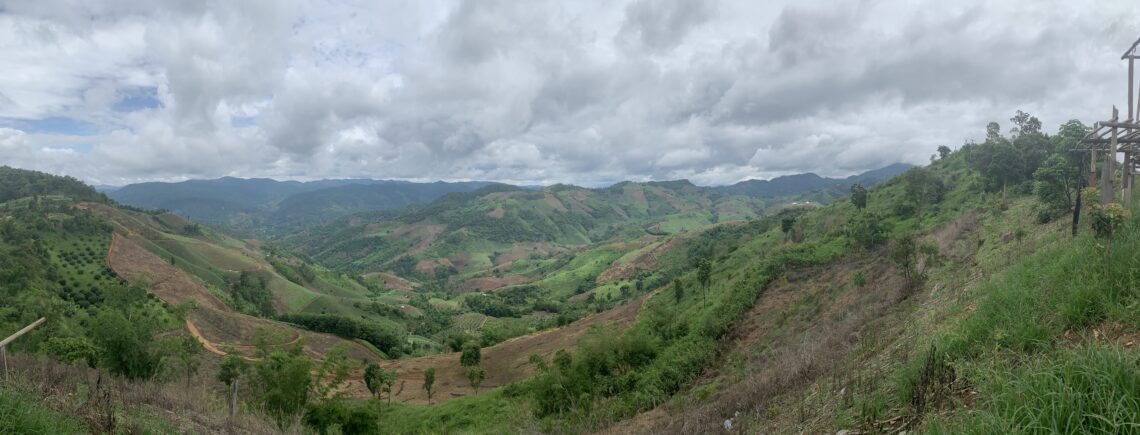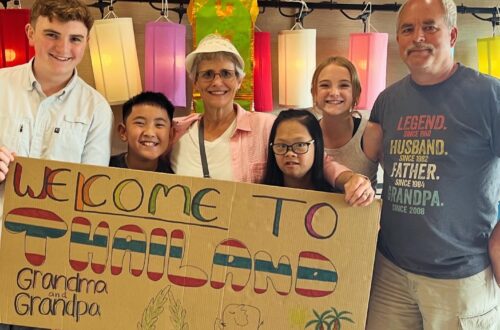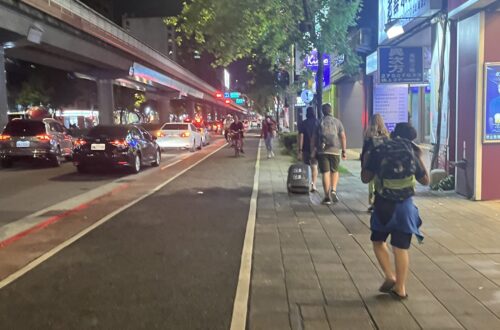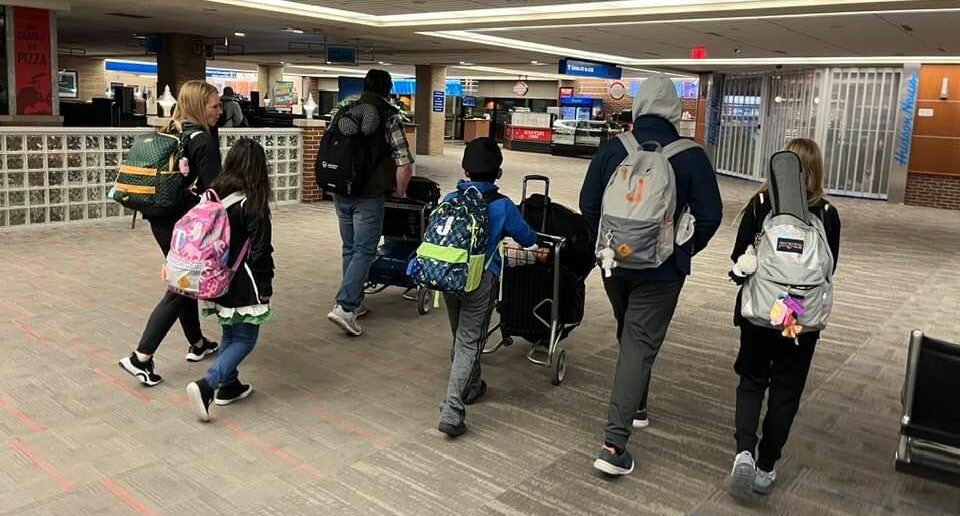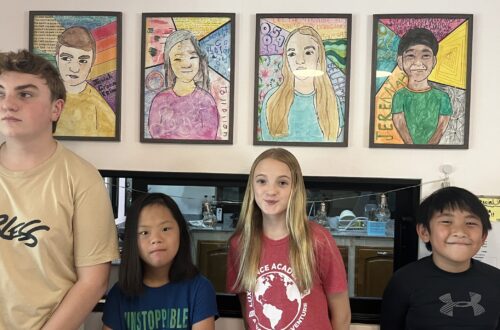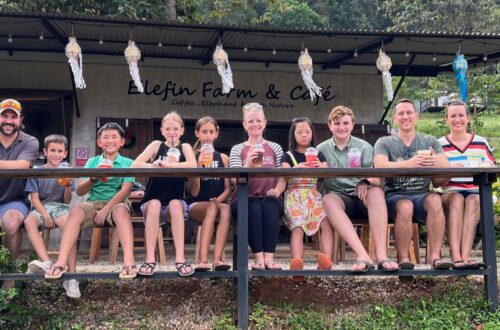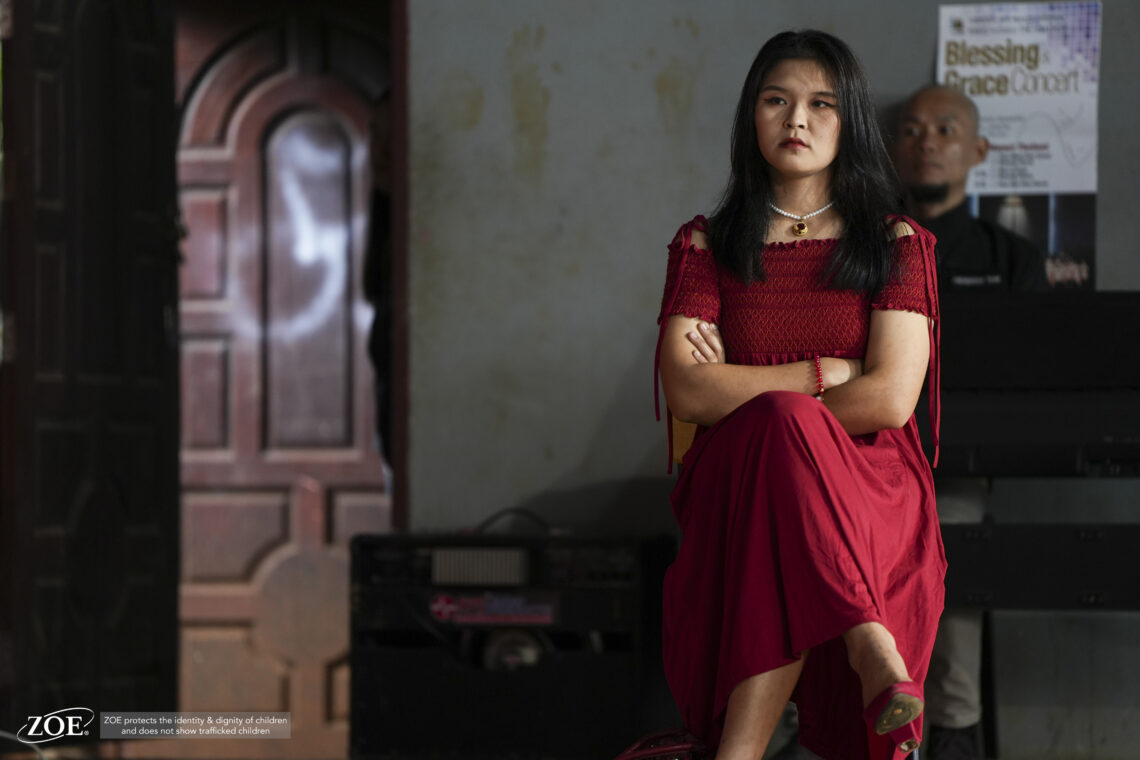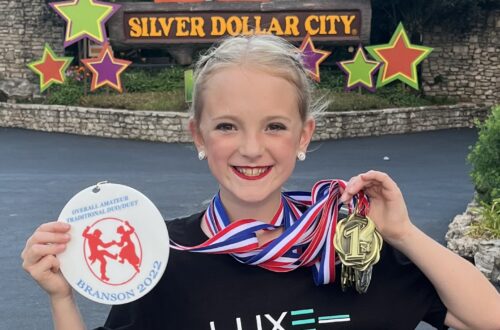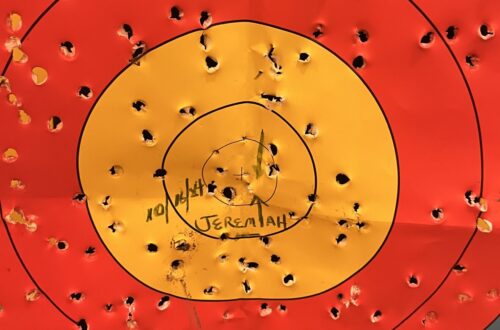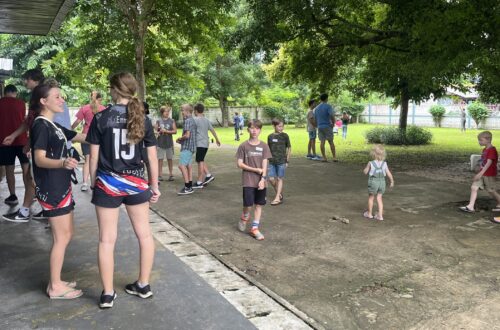Trafficking
-
My first ZOE outreach!
A few times a year a short term team comes to Thailand to work with ZOE International. Whenever a team is in Chiang Mai they go on an outreach with the ZLT (Zoe Leadership Training) students to share the gospel and spread awareness about child trafficking. My dad has gone on just about every single outreach because he works with the ZCR (ZOE child rescue). I didn’t realize that I was even allowed to go for a while but as soon as I heard that I could go on a ZOE outreach I told my dad that I would love to go with him. But before I got the chance to go I broke my foot and Josiah got to go instead. I was really bummed that I couldn’t go so I told my dad that I wanted to go on the next one. So as soon as the next one came and finally I got to go on my first outreach with my dad and Josiah!
ZOE Outreach Day #1
It was about a three hour drive to the Hmong village. The Hmong village is on Doi Inthanon mountain which is actually the tallest mountain in Thailand. When we got to the village I went with Chome (my roommate) to our room and unpacked a little. Then we headed off to dinner and when we finished eating we played some fun ice breaker games with the team and ZLT. My favorite game we played was the game my dad was in charge of. Basically about 10 people from each team (we split into four teams) would get in a line and would hold a long skinny pole with only our two pointer fingers. Then as a team we would all have to lower our pole to the ground with out letting any of our fingers off of the pole. If on person even slightly lifted their finger off, the whole team would have to restart. The first team to get all the way to the ground wins. It’s actually a lot harder than it sounds! After we played a couple more games we headed off to our hotel rooms and went to bed.
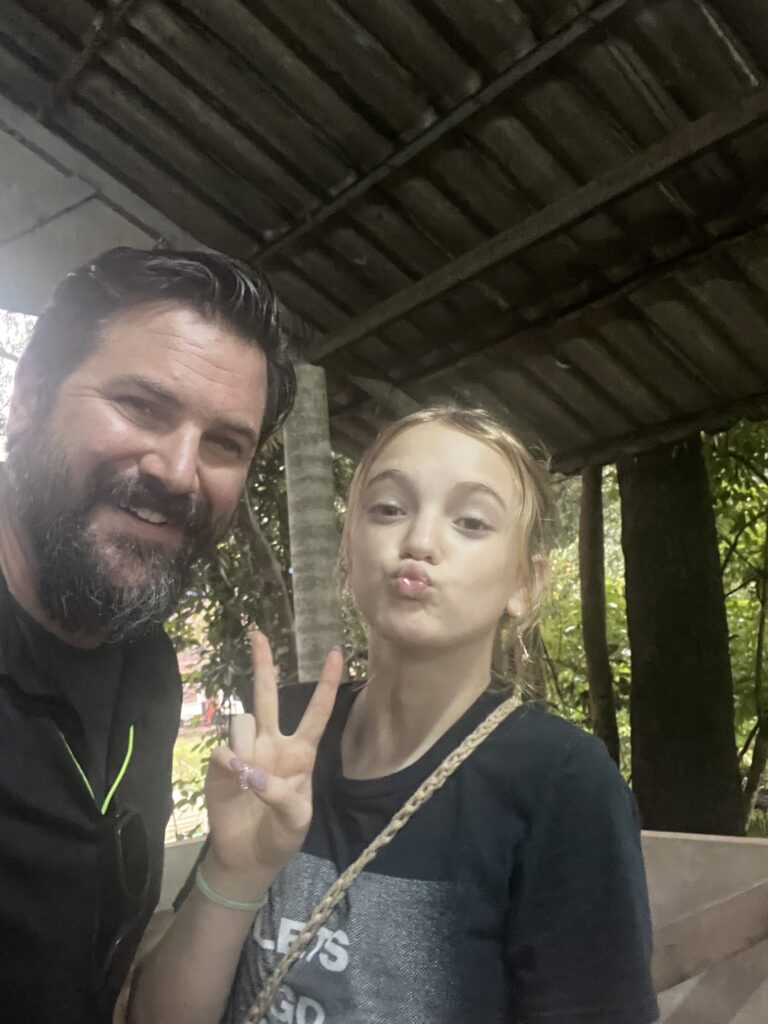
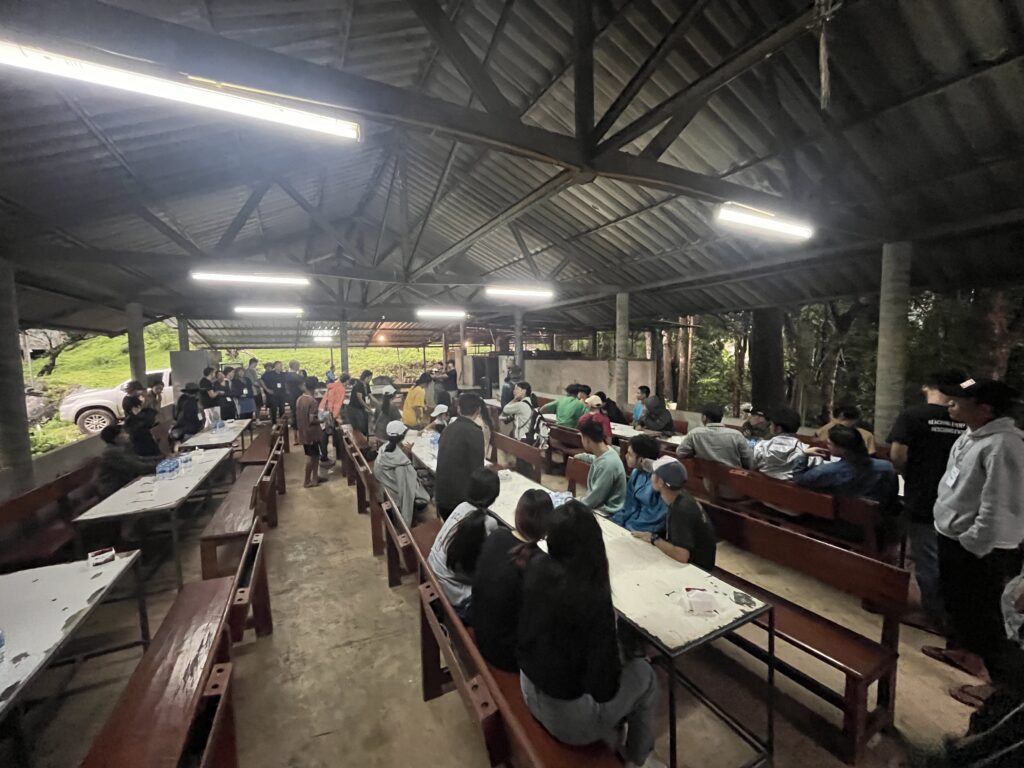
Zoe Outreach Day #2
We woke up kinda early to go to breakfast. I believe we had fried rice with ham and eggs which was really good. Then we went to the Hmong church. We didn’t stay for the whole service because the preaching was in Hmong and if we were to stay they would need to translate it into Thai and then into English which would have been to much of a hassle. It was still really cool to go to a church service in a completely different language that I have never heard before. We then went back, had lunch and listened to a couple testimonies. After that we split into little groups and started walking around the village. We would go up to peoples houses, talk to them, give them goodie bags, pray for them, and invite them to come to our thing at the school that evening. I think we went to around 3-4 houses and even though I didn’t understand most of what they were saying it was a really cool experience. Many of the people in the village have a much different life style than I do and lots of them are very poor. It was really cool that I got to go and pray for them and help them out even with just a goodie bag and an invitation.
When we were finished we headed back for dinner and then we went to the school and started to set up. Then people started showing up. There weren’t that many people but that’s ok. We started with prayer and worship. Then the ZLT did a drama and we helped with one too. After that we gathered around some people who wanted prayers and prayed for them. Out on the street there were even some people who were stopping and sitting on the curb to watch. Then we distributed the rest of the goodie bags and went to our hotels to get some rest for tomorrow.
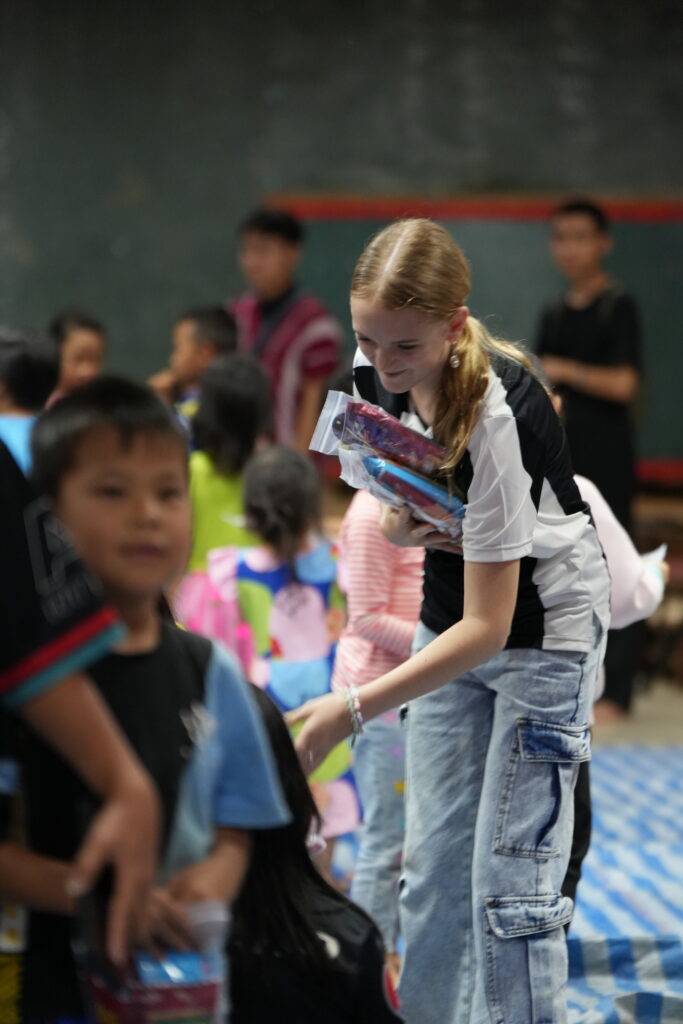
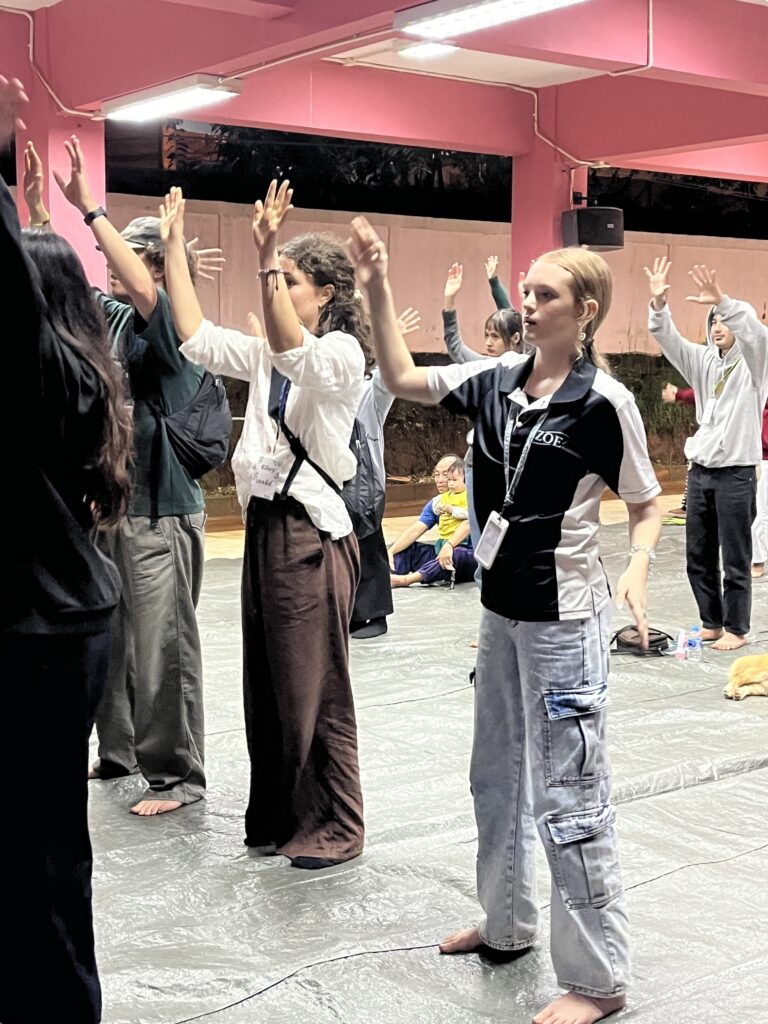
Zoe Outreach Day #3
We again woke up bright and early for breakfast and some worship. After that we went to the school to get ready and set up. When the kids came out of their classes the ZOE staff welcomed them with games and prizes to get the kids in a fun mood. One of the STM (short term mission team) members dressed up in the iconic ZOE elephant.
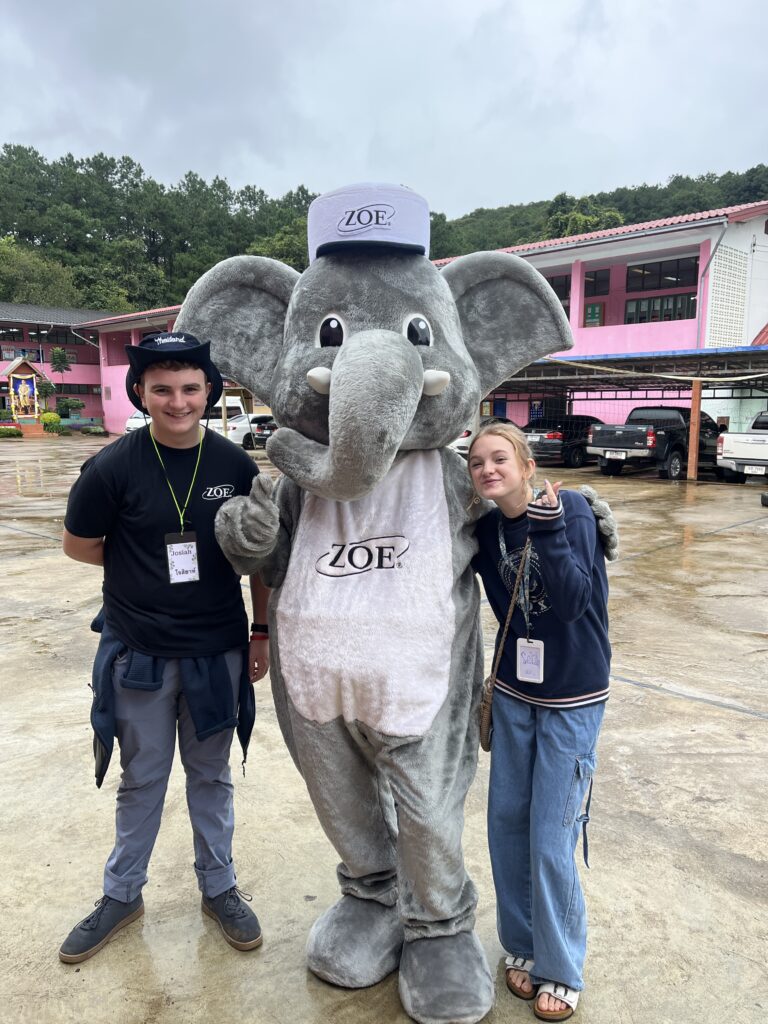
But it soon became more serious when the ZLT did their drama. You could hear the room go more quiet and the expressions on the kids faces started to become a bit less goofy. The drama drama showcased a trafficker manipulating, and abusing children. The things that some children have gone through are unimaginably horrible. There were no words in the drama only a scream. Out of everything I did and saw through out the whole outreach I think that drama was the most impactful for me.
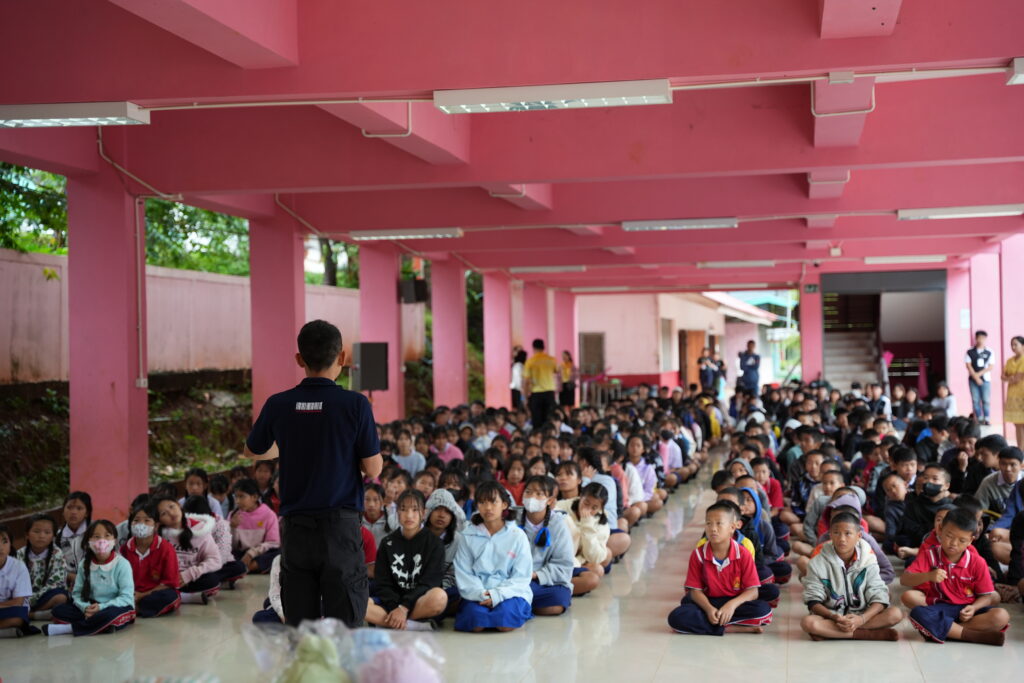
We had the kids split into little groups and rotate through stations. The stations were about the different types of child trafficking and one about the gospel. The children rotated through the stations learning about each one and playing different games. We had the older kids in one big group staying in the main area and the younger kids rotating throughout the classrooms. And then when they had gone through all of the stations the kids switched. The older kids went through the stations and the younger ones stayed in the main area. Then when our help wasn’t needed, my dad, my brother, and I went back home.
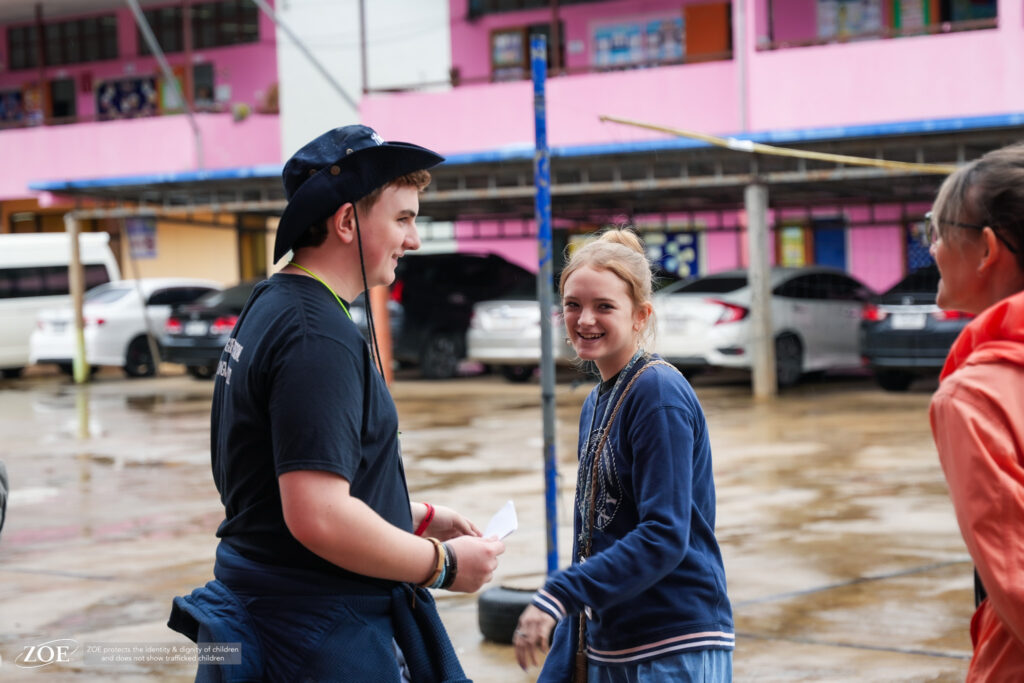
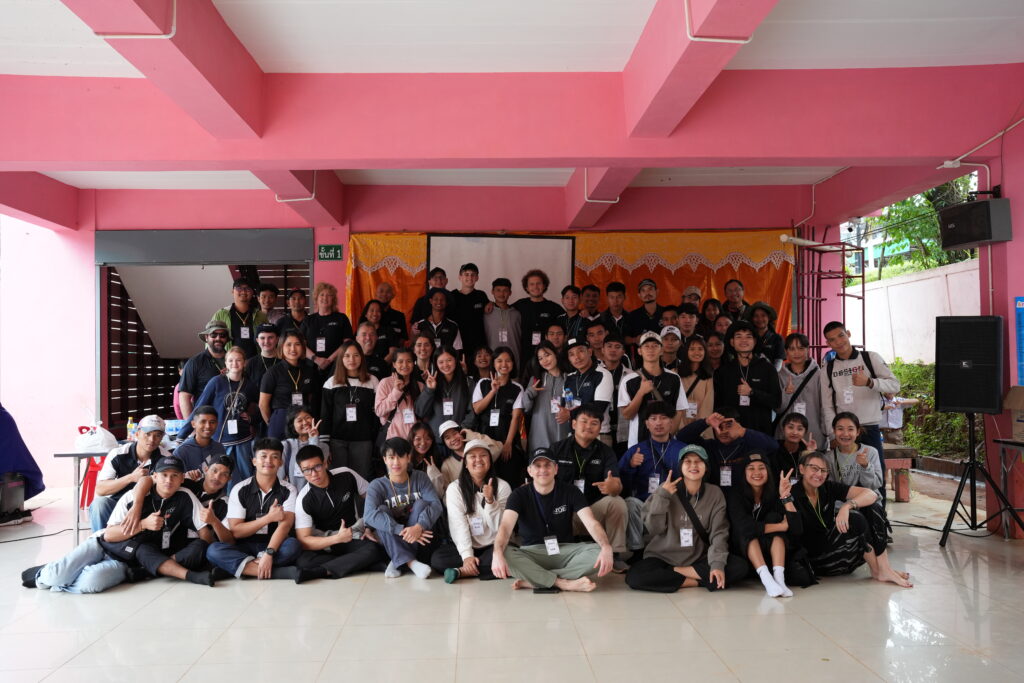
I had so much fun on this outreach. I learned things I didn’t know before, I had experiences that I don’t think that would have anywhere else, and it was definitely something I would love to do again!
-
The Inconvenient Truth about Child Sex Trafficking
Since working with our investigations team, my view and understanding of human trafficking, especially child trafficking, has expanded to a degree I wasn’t prepared for. Imagine if you will, your nose pressed up against a canvas painting. For all you know, everything you see is all the picture is. It would be easy to think you know the entire picture from that close-up perspective, but it isn’t until you step away from the canvas that you see just how diverse the painting actually is.
If you’re like me, the topic of “child trafficking” can easily be understood from that analogy. Everything I knew about child sexual exploitation I learned from the media, Hollywood, and scandals of a notorious pedophilic billionaire found hanging in a prison cell. God used those stories to get me off my couch and into the arena to combat this horrific scourge, but what I’ve come to discover is that what I “thought” I knew about child trafficking and what I have “learned” firsthand, are not just different, but categorically transformative.
I’ve never met a child who had been trafficked by a Russian Organized Crime syndicate. I’ve never met a child who had been exploited by an A-List celebrity. I don’t know any children who were on private islands or exclusive parties or private jets. I don’t know of a kidnapped teenage girl on vacation, whose father has a very particular set of skills acquired over a very long career. To be clear, there ARE children who are victims of these circumstances, and their stories are no more or less valid, important, or impactful than any other child victim. What I have encountered is far less “sensational” than the stories that get media attention and Hollywood scripts yet is vastly more common and much more difficult to combat.
I know of children sold by their parents or relatives. I know kids abandoned and taken under the wing of a seemingly benevolent adult who now provides shelter, clothing and food, only then to exploit their innocence later. I’ve heard stories of kids who willingly surrender themselves to pimps as an act to make money to help provide for their impoverished and often disabled family. I’ve seen traffickers under the age of 25 exploiting their underage “friends” for a share of the profit. While there are sophisticated and transnational criminal rings involved in trafficking children, my experience shows the problem is vastly more widespread and disconnected. Arresting one trafficker has little to no bearing on the operation of another.
We regularly see kids willingly and actively posting seductive photos of themselves online, complete with their weight, bust, and waist sizes to secure employment as cocktail waitresses, servers, hosts, and more. Their uploads are in response to active posts from legitimate businesses looking for extra help on busy weekends, special events, or for high-profile guests. The business’ solicitation itself might be benign, but the hundreds of folks surveying those posts with far less than positive intent are now in possession of a name, a face, social media information, and clear vulnerabilities.
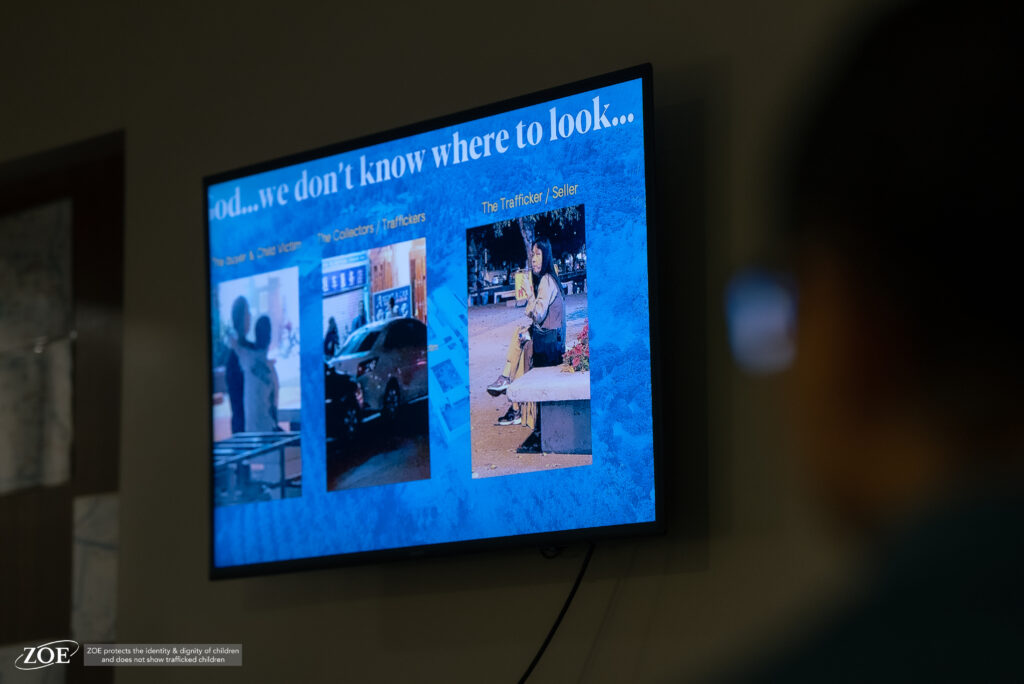
Unlike the portrayals I’d seen on the big screen, of the cases I’ve worked on, most traffickers have been female. Nearly all of them are barely adults themselves. The narrative I believed involved prowling men ripping children from sidewalks on their walk to school, not women luring children away because of their innocence. But women initially appear less threatening and can easily seduce, lure, convince, or manipulate a vulnerable child without ever threatening violence.
Additionally, if you’re like me, our hearts break at the thought of little girls being exploited for sadistic pleasure, but we’re ignorant of the massive market for boys as well. No matter the fetish, there is an eager and evil entrepreneur ready to supply the demand and make a buck. Don’t deceive yourselves, trafficking is business, and it is BIG business. Drugs can only be sold one time, but a child can be sold repeatedly. It is a pure market economy: where there is a demand, someone is eager to offer the supply.
Children are commodities, and many of them are held against their will in dark rooms, with little food and no access to the outside world. Yet, of the rescued children I’ve encountered, many are victims of being deceived into becoming willing participants. Their traffickers/pimps dress them well, share a greater portion of the “profit,” and allow the children to come and go with more freedom. The children make more money than they could elsewhere, so they come back again and again “willing” to endure the abuse. They envision themselves more as employees rather than commodities or hostages. That mindset, coupled with the nature of their “business arrangement” make criminal proceedings much more challenging. “Are they really trafficked if they are free to come and go and are paid for their services?” Absolutely YES! But as long as police, prosecutors, judges, and the public’s narrow understanding of trafficking is shaped by the narrative portrayed on the big and small screens, the majority of child victims fall below the radar and their nightmarish exploitation continues.
The industry is incredibly lucrative, and if the public believes trafficking is defined by a narrow parameter, the industry often operates unchecked. Like the vilest version of the arcade game “Whack-A-Mole,” when one bar, massage parlor, restaurant, hotel, or other business is raided and closed, operations pick back up shortly after without missing a beat. The exploitation isn’t just happening in the darkest recesses of the internet or remote alleys in mysterious cities. It’s everywhere and not even very well hidden! The demand is unmatched.
Like most “good” people, it’s hard to fathom how anyone could dream of sexually exploiting a child. But the reality is, it’s a slow fade. I know of no one who woke up one day and decided to rape a child. I’m sure that’s happened, but it absolutely cannot be the norm. The fade all begins with pornography. We’re all attracted to the salacious, the off-color, the taboo. It has a draw, a thrill, a risk. Porn provides all of that and more. Like barbs on a fishhook, once set it is damn near impossible to get free. Porn allows the viewer the rush without the risk. But it never fully satisfies. Before long, consumers need more salacious, taboo, and beyond-the-pale content, not suitable for civilized company. Healthy friendships that should build up, edify, and strengthen one’s character are traded for alluring and arousing images for cheap fixes and thrills.
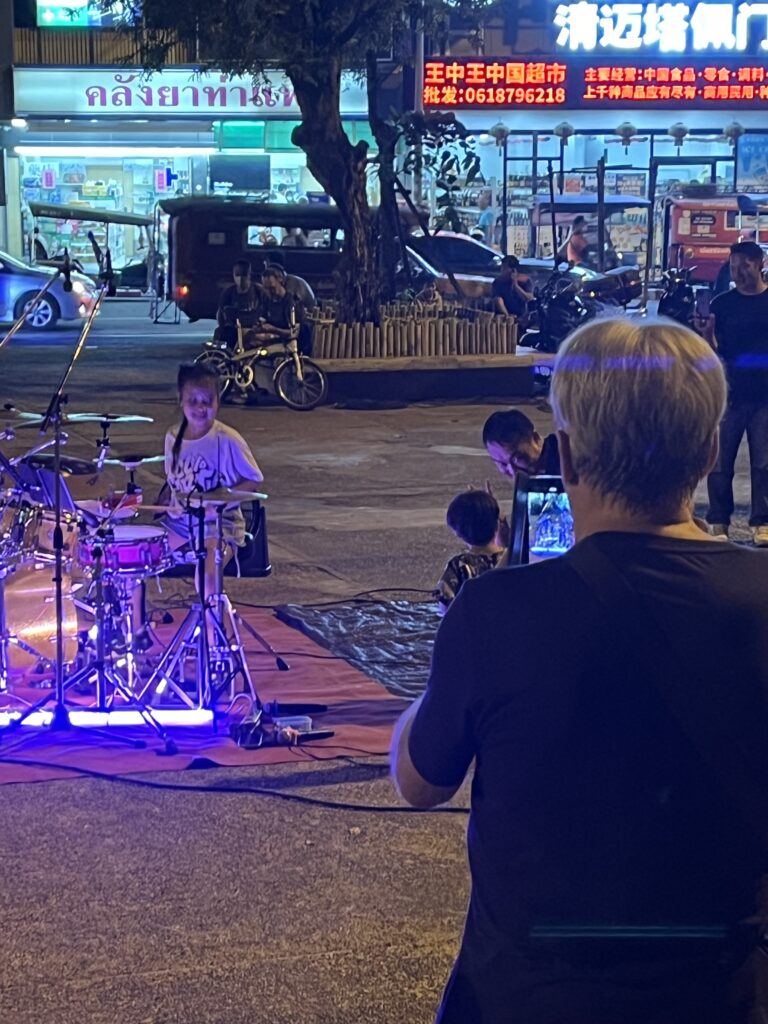
Like any other drug, once the initial buzz wears off, the user returns to their “normal” life which is often pitted with tragedy, hardship, depression, loneliness, and isolation. They need another fix to disguise the pain, and this time a larger dose is needed. Before long, they’re on to more dangerous and lethal substances. Porn is EXACTLY the same, but instead of the user hurting their own bodies with substance, the victim is the person in the image, often threatened, beaten, and/or drugged against their will to make them a willing participant. The slope is greased by the thrill of looking at “barely legal” individuals (PAUSE: let’s be honest, do we really believe the pornographers are diligent on checking IDs to ensure the person is in fact an adult?). Downward they go and next there’s the rush of viewing, sharing, selling, and producing the truly illegal content of Child Sexual Assault Material (CSAM). The only rush left is experiencing the child from the screen in the present and physical form.
Make no mistake, the viewing of porn is not innocent, benign, victimless, or harmless. Porn is the purest gateway drug that fuels the sexual trafficking enterprise. Again, it’s a business. The reason there is a supply of children to sexually abuse is because there is a tremendous demand for them. That demand is created by pornography, and whether the pornographer also participates in trafficking or not isn’t the point. The hook has been set, and others are ready to land the fish. The greatest dent society could make in the trafficking arena would be to stem the demand for pornography. It truly is that simple and requires no training, no money, no formal education, calling, or special gifting. Stop viewing, sharing, and purchasing pornography. Until then, kids are going to continue being prey for predators.
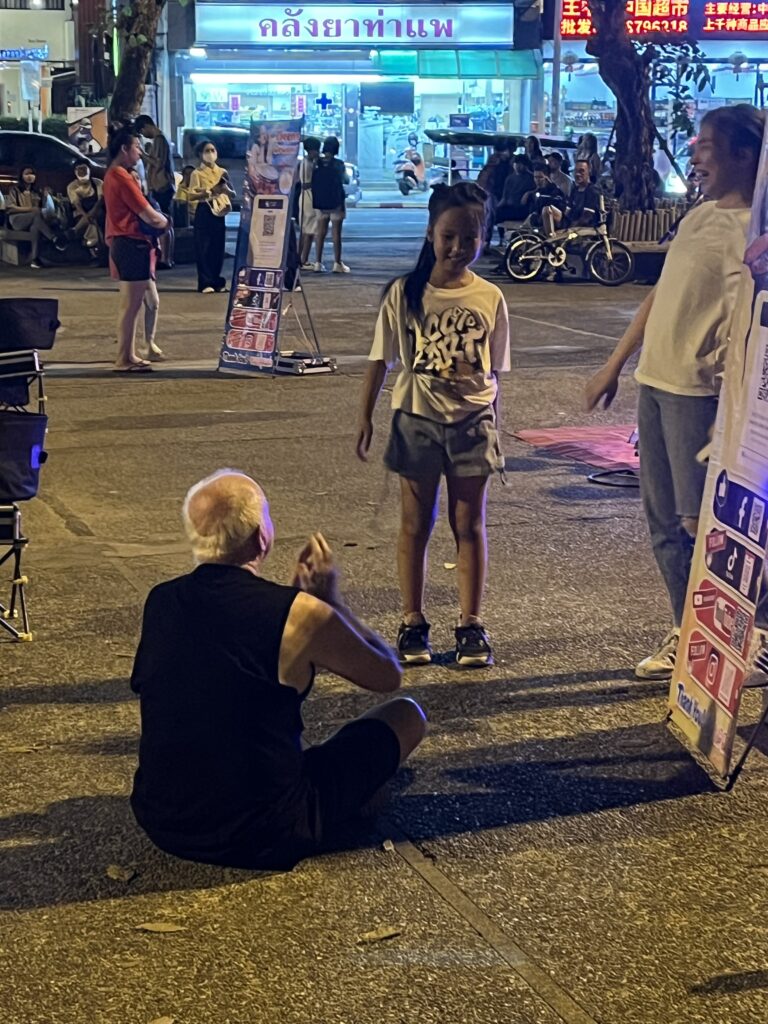
At this moment, we are aware of a known exploiter of children. He was arrested in Europe and served prison time for possession of over 80,000 images of child pornography. After serving his time, he moved to Thailand and has been seen near children: always with his favorite camera slung around his neck.
Stay tuned and I’ll next fill you in on the 8 types of trafficking, showing just how nebulous and shape shifting this nightmare truly is.
-
My First Outreach
Many times throughout the year, ZOE has prevention outreaches to many places in Northern Thailand. Every few months or so, a short-term missionary team, usually from America or Australia, comes to Thailand for ZOE. They do several things around ZOE, volunteering anywhere and everywhere they are needed. And then comes the outreach. This is where the short-term team, ZLT Students (Zoe Leadership Training), and the Child Rescue Team, go to the little villages in the mountains and preach the Good News of Jesus and spread awareness about human trafficking. Since my dad is part of the ZCR (ZOE Child Rescue), he goes on nearly every single one. And, when there is enough room, some of the missionaries’ families are allowed to tag along and help where needed. Well, there was extra space and I went on a prevention outreach to Doi Chang (a mountain village, known world wide for its quality coffee). It was a really great opportunity for my first outreach because it was ZOE’s first youth team, 15 or so teenagers from America.
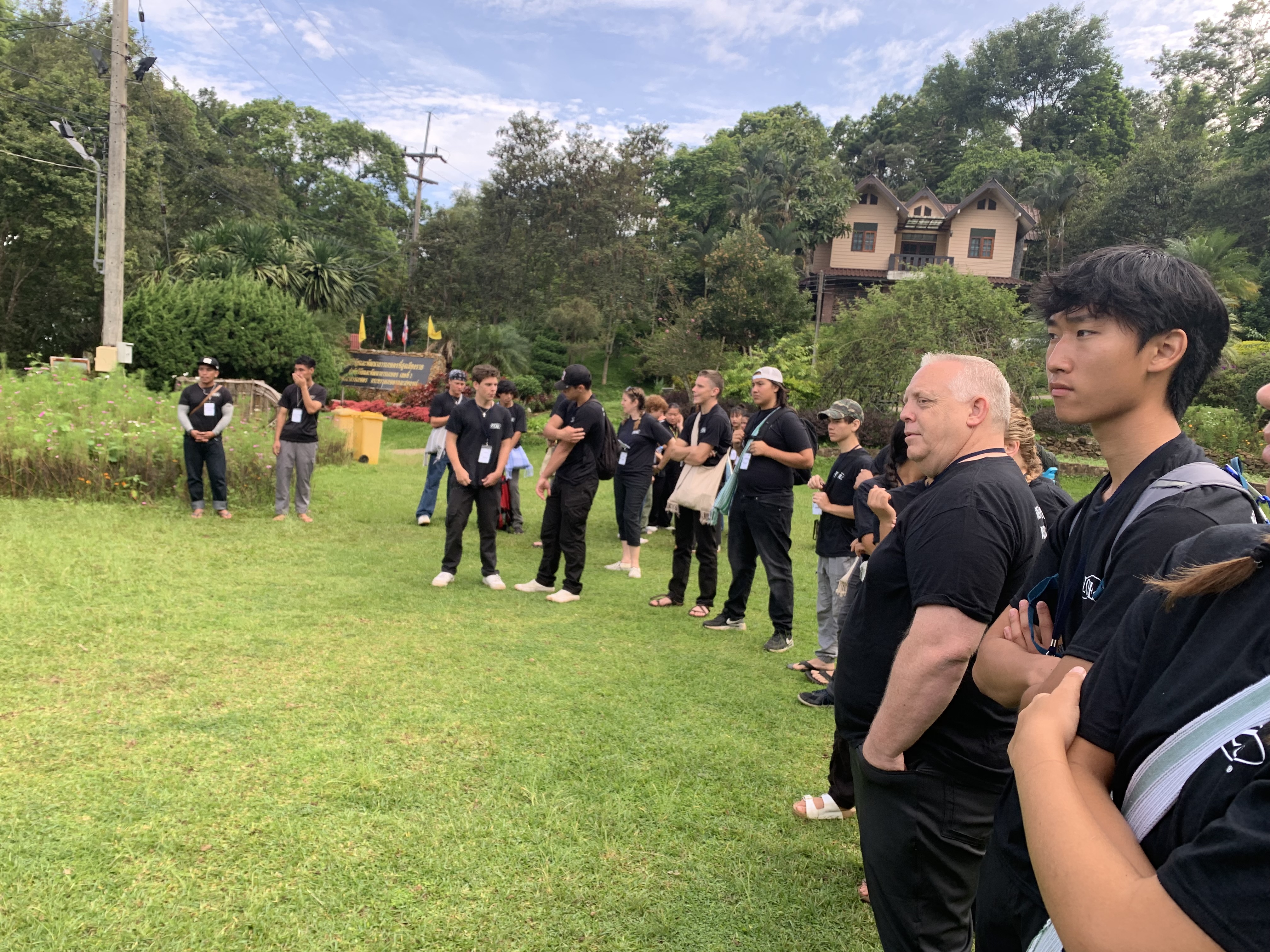
I rode along half the way in Nick and Heather’s (fellow Zoe Missionaries) truck and then we all met at a PTT (gas station) to gather and regroup. We still had about and hour or two ahead of us so we all grabbed snacks at the Seven-Eleven. Something I noticed right away is that teens are much more adventurous than most adults. Especially when it comes to food. They ate fun chip flavors like Ghost Pepper, Hot Chili Squid (my favorite), Garlic Bread, Seaweed, and many more. They would see something they haven’t seen before and just get that. Most people who come to Thailand, unless they are young tourists, are more likely to stay with their safe and reliable Coke and Snickers instead of trying something new. I personally enjoyed this. I have become much more adventurous in my food while living here. As a Nebraska kid, seafood always kinda grossed me out, I couldn’t handle spice, and I was not comfortable eating anything without knowing about everything in it. Now I am sure I have eaten intestine and not known about it. Sometimes at restaurants, I just pick the thing with the funniest-sounding name I can find and eat whatever I get. I love most seafood now, and can handle pretty spicy things. It was kinda refreshing to be around several other people who were just as adventurous.
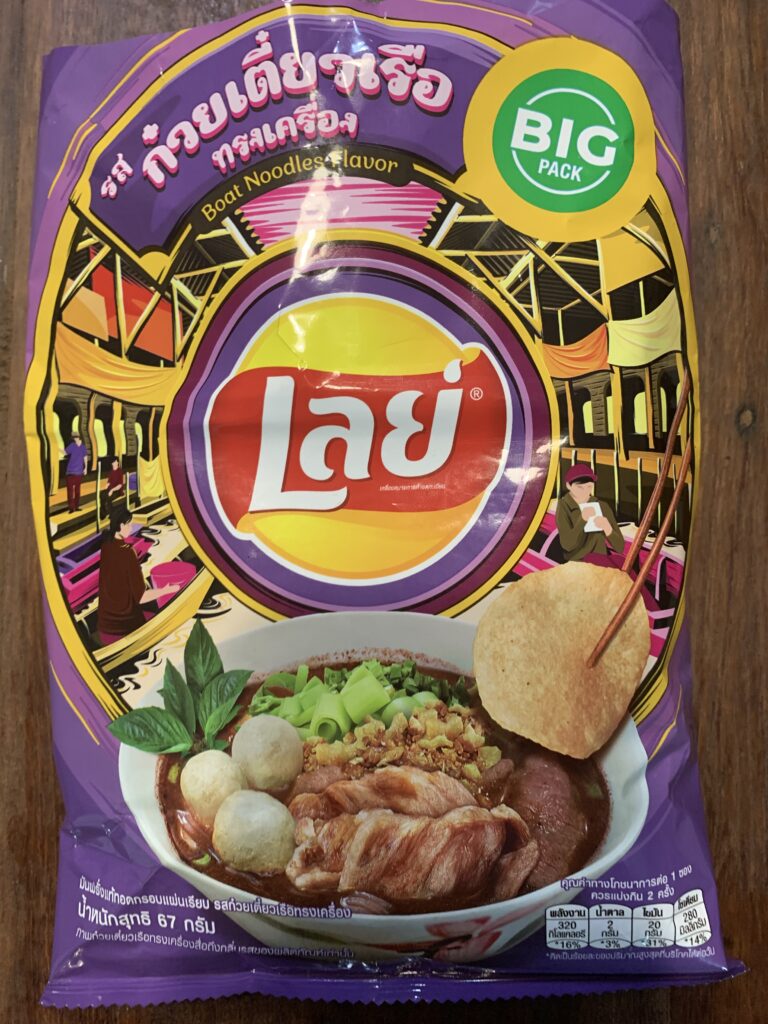
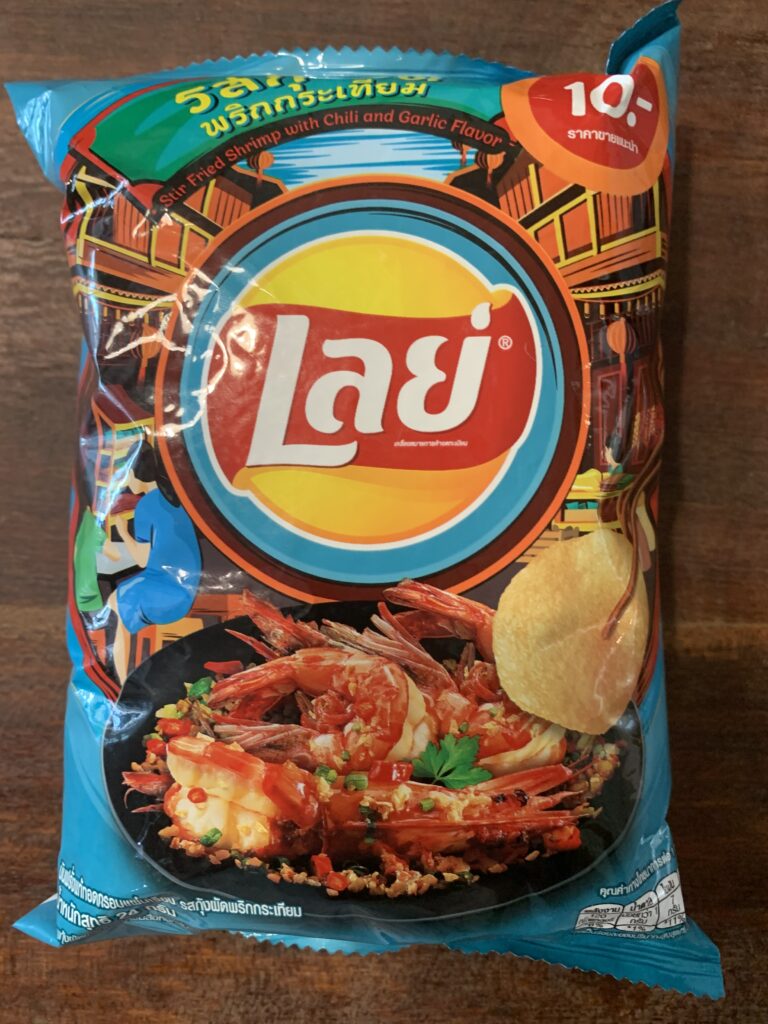
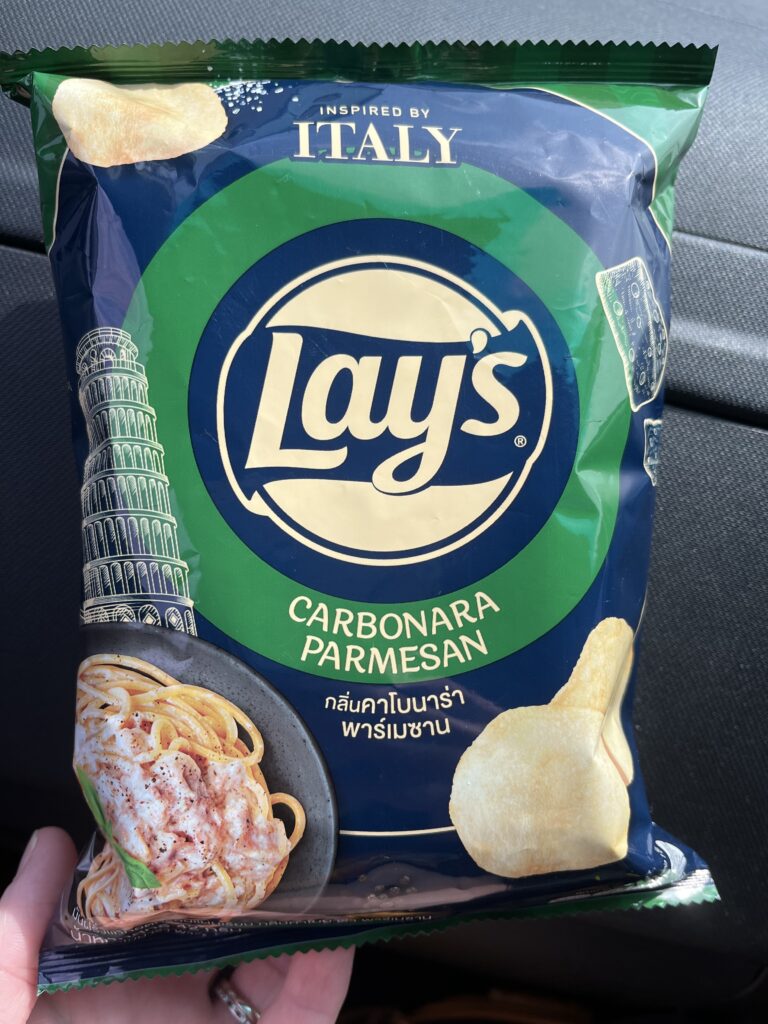
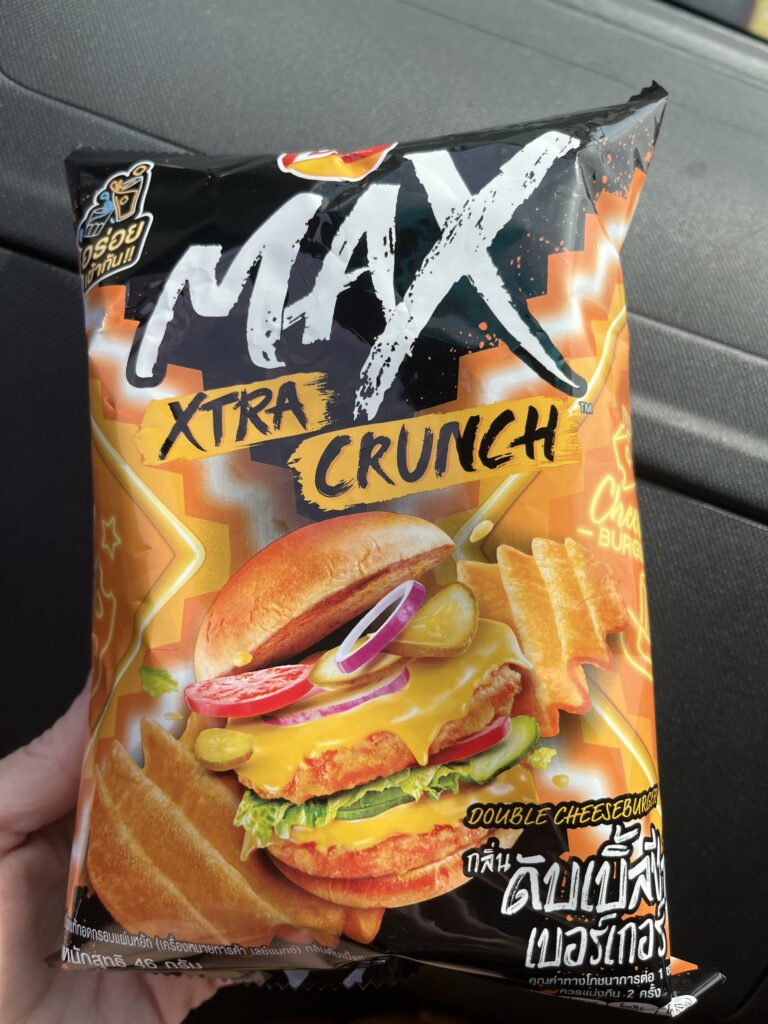
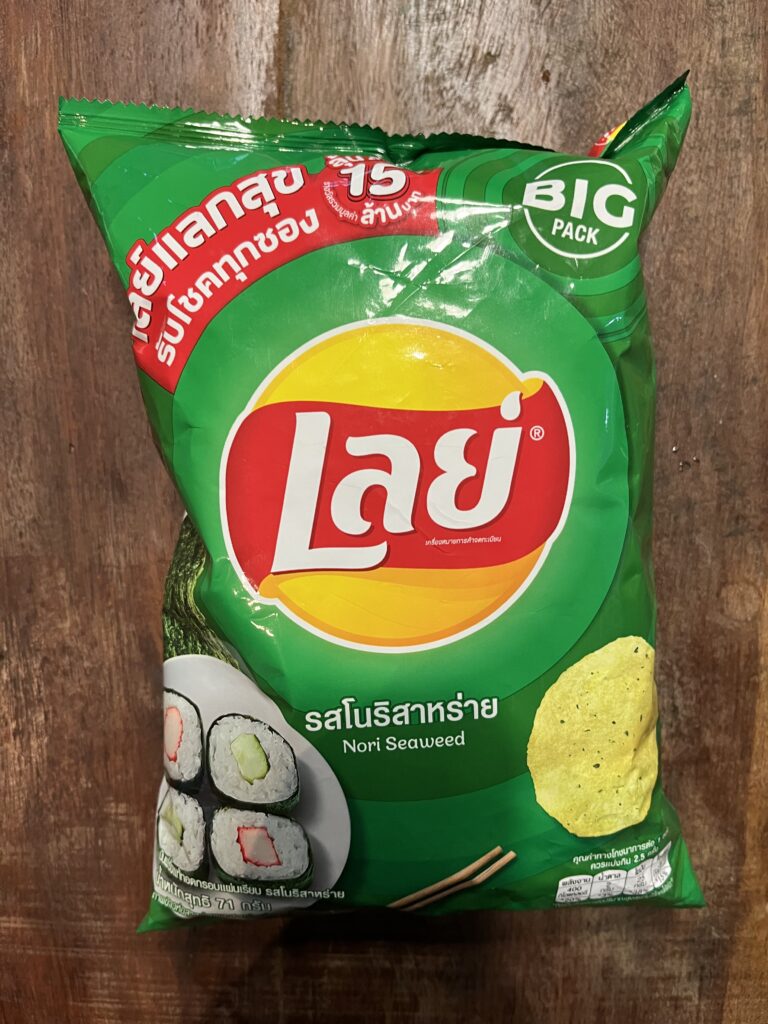
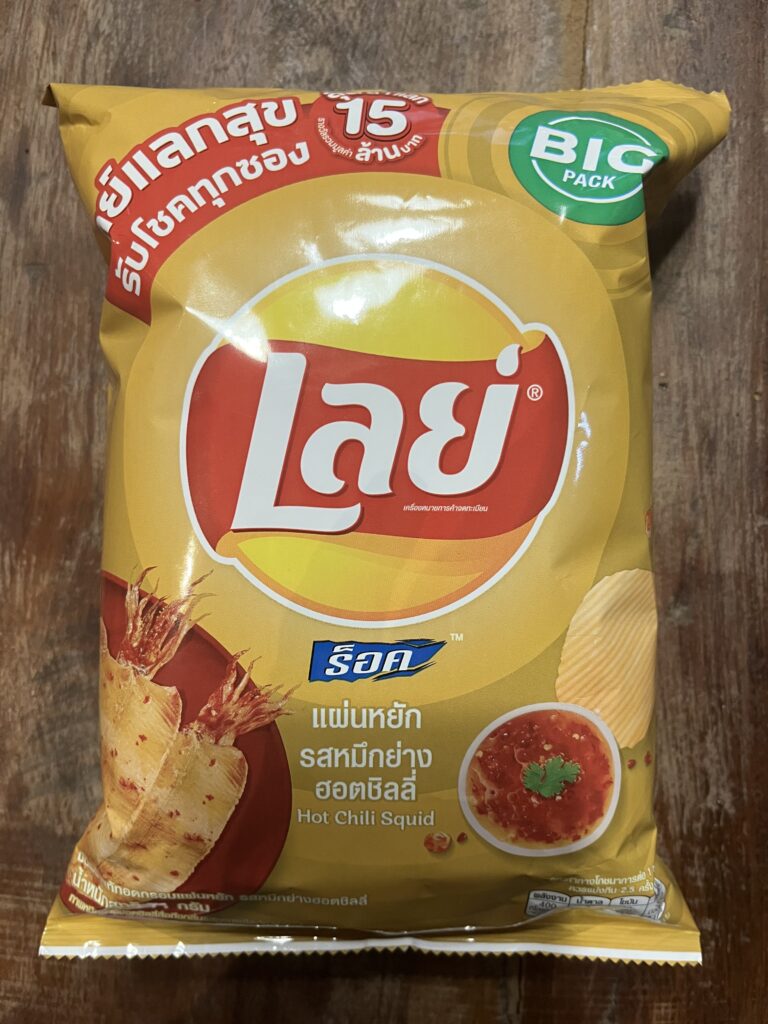
I rode with some of the teens in one of their vans the rest of the way and compared chip flavors. They, of course, were still jet-lagged and several of them would get car sick so they slept most the way and missed the amazing mountain views. We were driving through rainforest-covered mountains the whole way and we were surrounded by awesome views the whole time. We even stopped at a view-point before getting to the village and took some photos there.
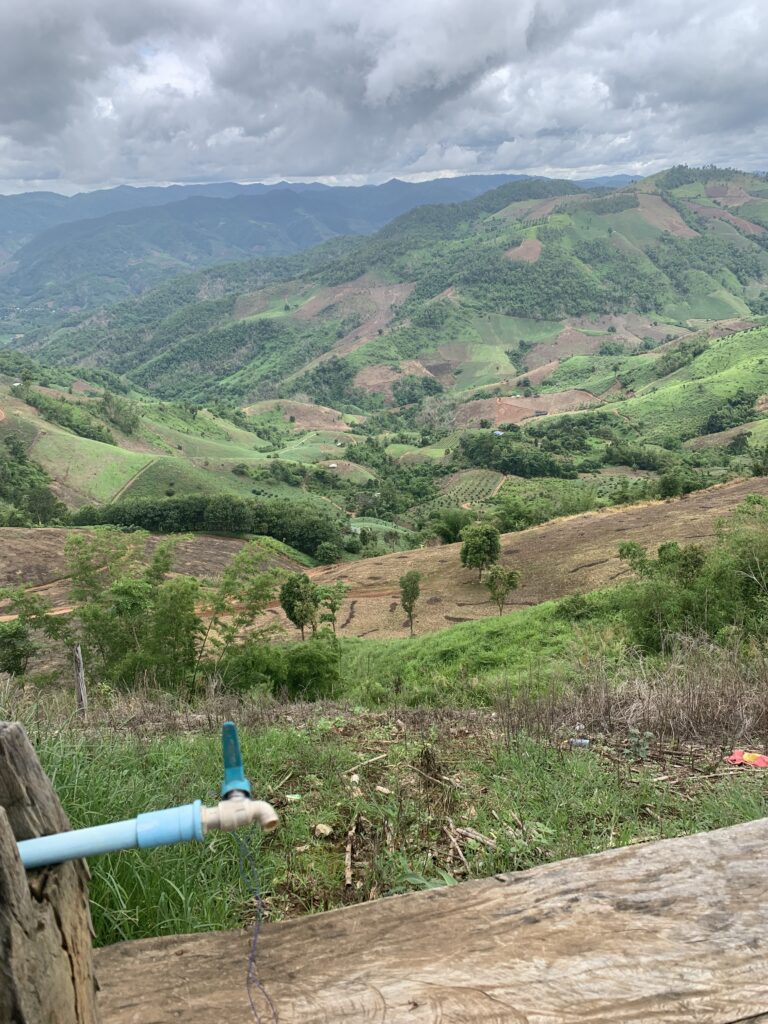
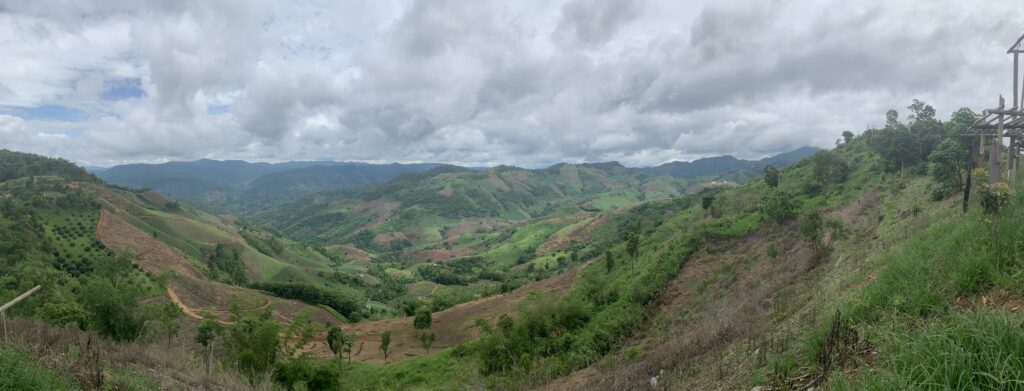
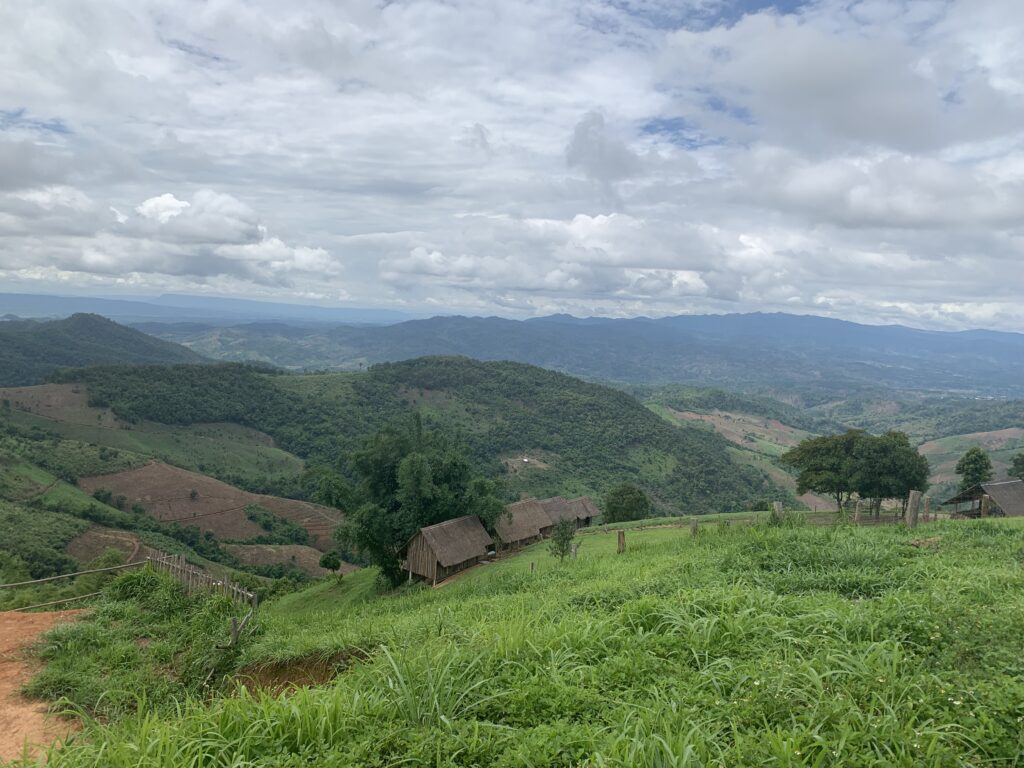
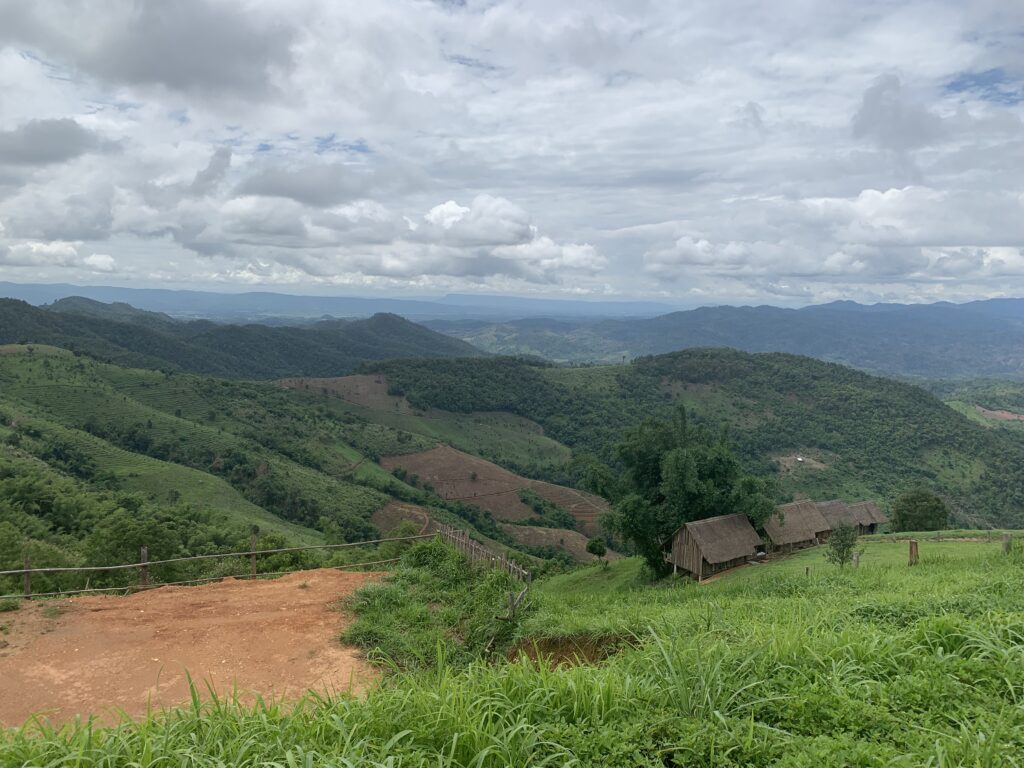
We got to the village and had lunch before heading to the local village church. One thing to understand about all these little villages in Northern Thailand is that, they are not all Thai. There are people from surrounding countries and several other tribes and groups that are too small to be considered their own nations even though they have their own languages and traditions and clothes and cultures. The people we visited were the Akha Hill Tribe. They, obviously, spoke Akha (or Akhanese) which is probably similar to Thai but still another language altogether. This led to a few language barriers between ZOE people and the older people of the village. However, the younger people who went to schools were taught Thai and sometimes English. Several of the ZLT students also speak other languages so we could still get around just fine.
Well, kinda. Language wasn’t the main problem with getting around. I don’t know how these people get around in these villages. They are twisting, winding, skinny roads with no organization whatsoever. And every single turn has steep inclines that feel like 80 degree drops. The two-way roads looked like they couldn’t even fit one car. How it works here is, on the skinny streets, if you are going one way and someone else is coming the opposite way, the person who made the least amount of ground backs-up and lets the other through. How the van drivers got around is beyond me.
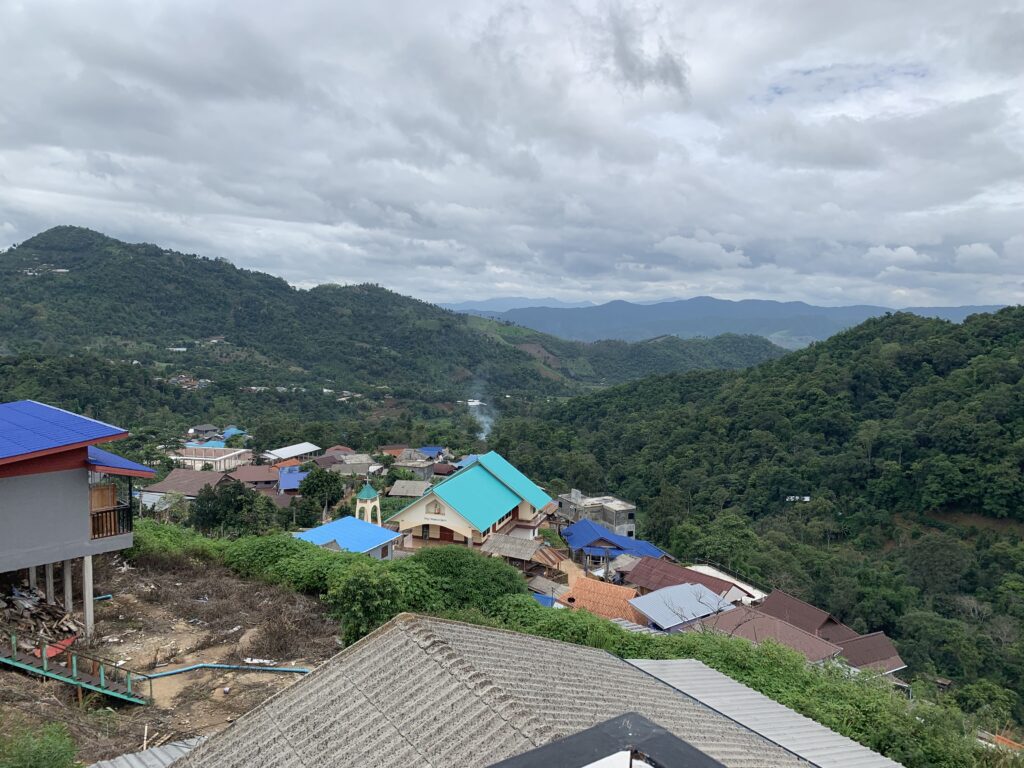
Anyway, through a lot of winding and turning, we got to the church and split up into small groups. Each group had a translator or two, ZLT students, STM (short term missionaries, I know the acronyms are confusing), and some volunteers who lived in the village. The teams would spread out throughout the village and just go knock on people’s doors and offer to pray for them and invite them to the church for a worship service. I tagged along with one group where our “village volunteers” were three small girls who knew exactly what they were doing. While leading the way to the different houses, they would run around and just hang on to our arms and take our hands to show us something, as we walked down long, steep roads and went from door to door talking about Jesus and prayed for people and invited them to come to the worship service that night. After that we went back to our gathering place and ate dinner. Then we went back to the church and welcomed people as they came to the service.
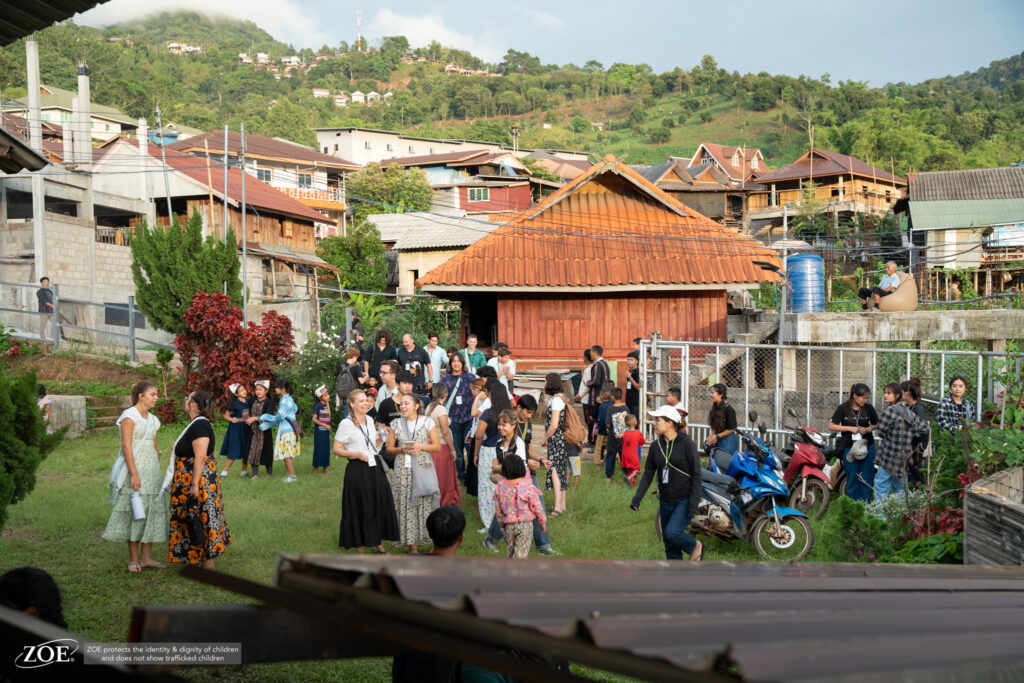
There was an outdoor seating area as well as the inner sanctuary of the church. Everyone who came went into the church and so only a few people were outside. Me and Dad stayed outside because we both hate hot stuffy rooms overflowing with people, but also it opened up space for people to be close to the message. Fortunately, they set up a camera inside that was connected to a projector outside so we could watch everything going on inside, such as the worship, dramas, and prayers.
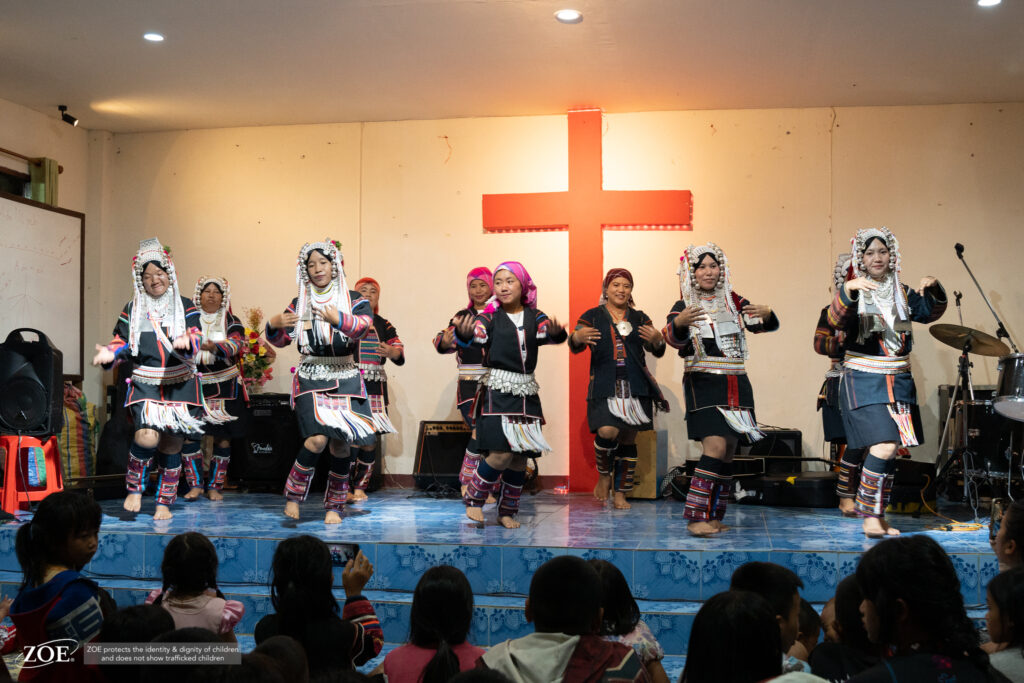
(P.S The Akha people showed some of their culture as well)
After everything, we handed out goodie bags which the STM had helped prepare. We went back to our hotels and slept.
ZOE had reserved rooms at several different motels for the missionaries while the ZLT and ZCR members had these large cabins with multiple mattresses and rooms. Me and my dad stayed at Hotel Charlie which was comprised of several small “duplexes.” Our room had about a two-feet wide walkway, in-between the first bed and the wall. There were two beds with thin hard mattresses and pale pink bedspread. Also, there was a small balcony with an amazing view and a small Thai-Style bathroom. Thai-Style bathrooms are small, tiled rooms with a toilet, sink, shower-head and a drain or two on the floor. There is usually nothing separating these things so you can literally shower while using the sink to brush your teeth. After the shower, almost everything in the bathroom is covered in water so you have to be careful where you put your towel.
Now, as far as I know, no outreaches are the exact same, but they usually have the same layout. The first day is the door to door stuff and the worship service. The next few days though, is going to schools and spreading awareness about human trafficking. So that is what we did the next day. The school in this village was large with a big gymnasium/auditorium. Behind that was a good-sized open-air coffee shop for people to rest and regroup.
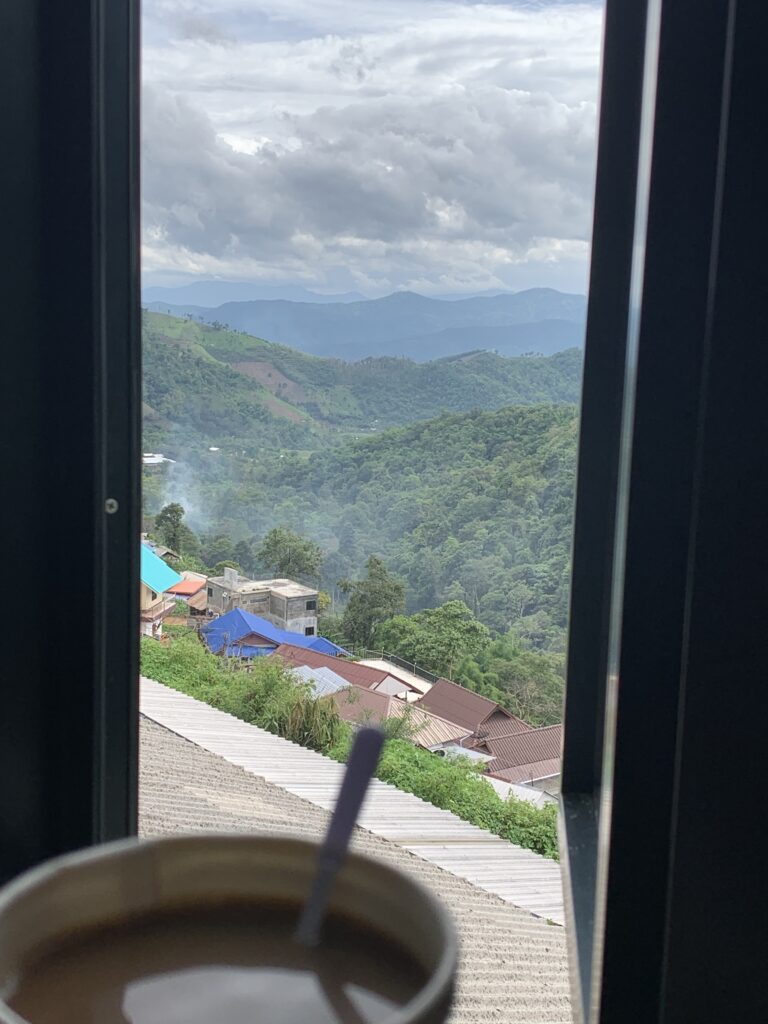
Something that ZOE does really well, is how they teach about human trafficking. This is a serious topic. It’s a scary topic. It’s a topic that doesn’t really get discussed around children. What ZOE does is they have people leading the younger kids in crafts and games that teach about trafficking while teaching about Jesus while the older kids are in the auditorium learning about trafficking. The speakers in the auditorium will make sure kids are listening by telling them how many times to clap randomly throughout the speech which is kinda fun and will throw prizes to kids who answer questions correctly. The STM and ZLT also had silent dramas showing the seriousness of trafficking in kind of a fun way but still very serious. It isn’t just fun and games. It’s serious and the speakers will talk for a long time teaching kids how to be safe and telling them how to be aware of what might be going on in their own village.
While all this was going on, I didn’t really have a specific job. Heather’s main job at ZOE is these outreaches and I was basically her assistant. She organized everything and I helped her make sure everything stayed organized. I would go around to all the different stations and tell them when they would need to rotate or come back to the auditorium. I would run and grab things for people and help set up things, just be wherever I was needed.
We had lunch there and had a few more things to do there after lunch, but mostly we just hung-out with kids and with each other. We also got to benefit from the coffee shop and get coffee from there although we had a hot water machine and instant coffee and cocoa drinks whenever we wanted.
After that we got back to our rooms to shower and rest before going back to the gathering place to sing worship songs and eat and play games. One thing I know we all appreciated was the team of cooks who had come with supplies in advance and spent the entire outreach cooking for us while we worked or had fun. The food was the best Thai food I have ever had and we had something different for every meal. They rarely had leftovers because we were all hungry and it was all so good.
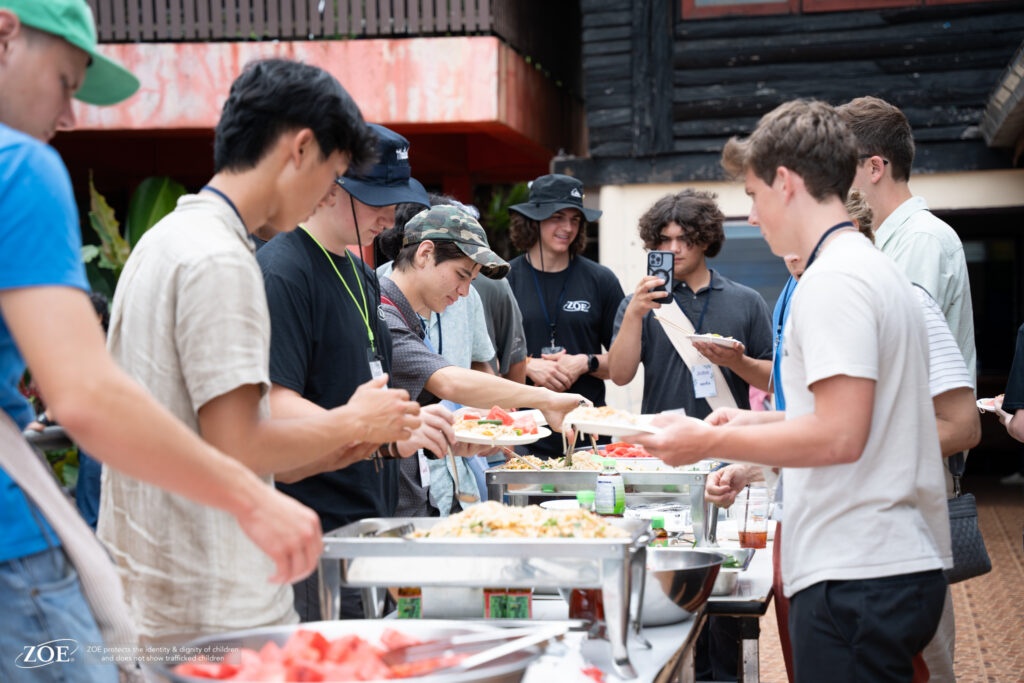
The next day was similar to the second one, though it was our last day in Doi Chang. We all packed up in the morning, had breakfast, got in the vans, and headed to another school. How ZOE ever discovered this school, I will never know. It was a rather large school but was completely hidden in the mountainous jungle. We spent over an hour on the worst roads known to man to get there. Skinny and ridiculously bumpy. The craziest thing was that some ZLT members were sitting in the back of the truck the whole way and they even fell asleep while us inside the cap were trying not to hit our heads on the roof of the truck. It was that bumpy. We got to the school and basically did the same thing we did at the other school with fun stations for younger people and older kids in the auditorium.
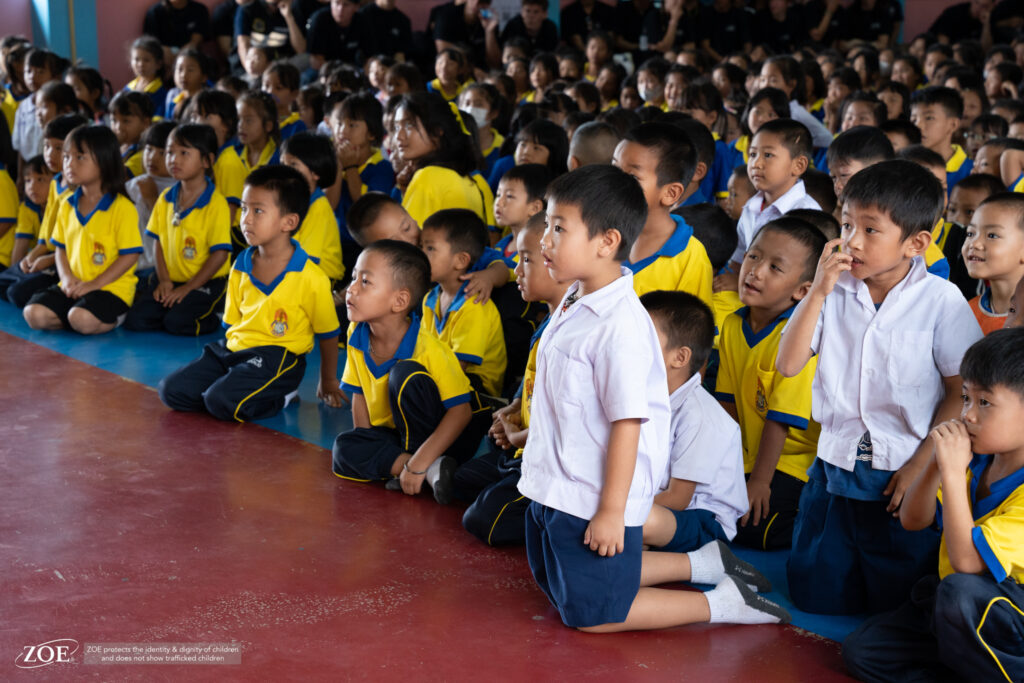
They did the dramas and the skits and then we had fried chicken and rice that they had cooked for us ahead of time and packaged in individual plastic containers. Then we packed up and headed home.
I totally enjoyed that outreach and have gone on another since then though Selah is talking about that one. It was nice having all those teens to hangout with and talk to though it was kinda crazy and hectic. I am not saying I am the most mature teen in the world but I am the most mature teen that went on that trip. They were a lot of fun but I just wished they would turn the volume down a bit.
I would love to go on many more outreaches. The atmosphere and the people at ZOE is probably the best atmosphere in the world. Our family likes to think of it like there are many cultures, none better or worse than the others, but ZOE culture far surpasses every other one. The people at ZOE are the most kind, most faithful, most fun, and most enthusiastic people in the entire world and our family is blessed to be connected to them like we are!
-
Moving To Thailand
This personal narrative was originally written by Jeremiah Keim as a requirement of his coursework for The Good and the Beautiful Level 3 Language Arts.
The day mom and dad told us we were going to move to Thailand, I was scared because I thought I wouldn’t be able to see my friends again. I was sitting on the couch and it was dark outside when mom and dad told me and my brother and sisters. After I calmed down, I felt really excited about it. It took several days to pack and we made our house into a place for other people to stay. Finally, the week before we moved we went to spend time with our family. Personally, I felt really sad that we would have to leave them but also really happy because they said they would sometimes visit us.
When we went to the airport it was really early in the morning. When we got to the airport we said goodbye and then loaded all our stuff onto the plane. Our first plane ride, I took a nap and when I woke up we were nearly to Detroit. The next two flights were nice and comfy because I got to watch movies and wear soft, warm, fuzzy slippers. It was longer than I expected, but then we finally got to Thailand. I felt really happy because we met all the ZOE people and I finally got to breathe fresh air again (the air wasn’t really fresh it was actually smokey, but, hey, at least it was air that wasn’t inside the plane all night).
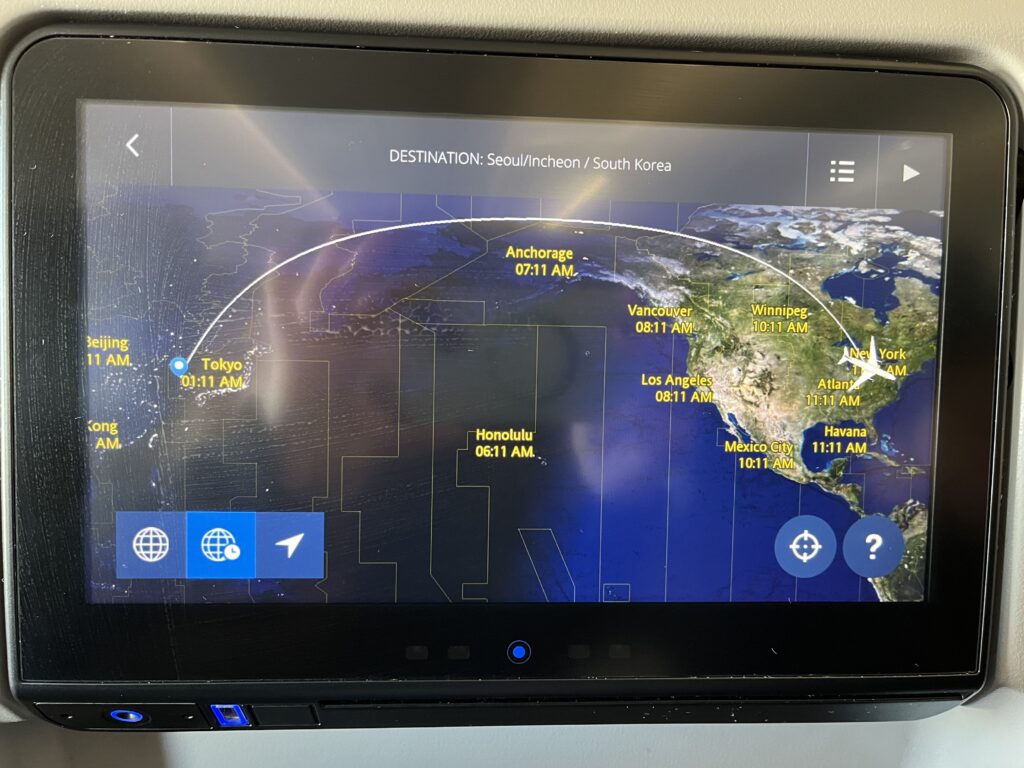
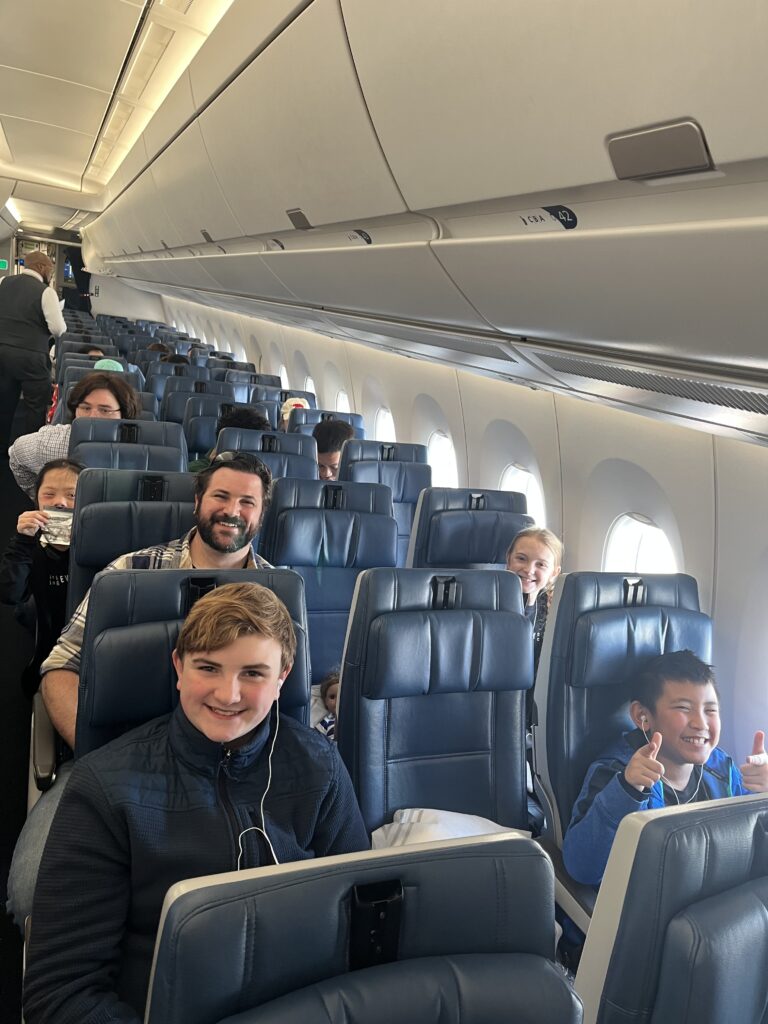
First, one of the missionaries took us to the house that we chose to live in. It was OK, but I was really scared of the geckos and of the snakes that might live here. Luckily, I haven’t seen any snakes. Eventually, I started to like geckos. I like to catch them and release them outside.
Next, the missionaries took us around to all their favorite restaurants and stuff. For example, we got to go with a missionary to a plant market. It was pretty fun. I saw lots of cactuses and Elephant Ear plants. Another example is that another missionary took us to this really cool art gallery where the paintings look super realistic, like you were holding a hammer in the painting or like you were fighting a dragon.
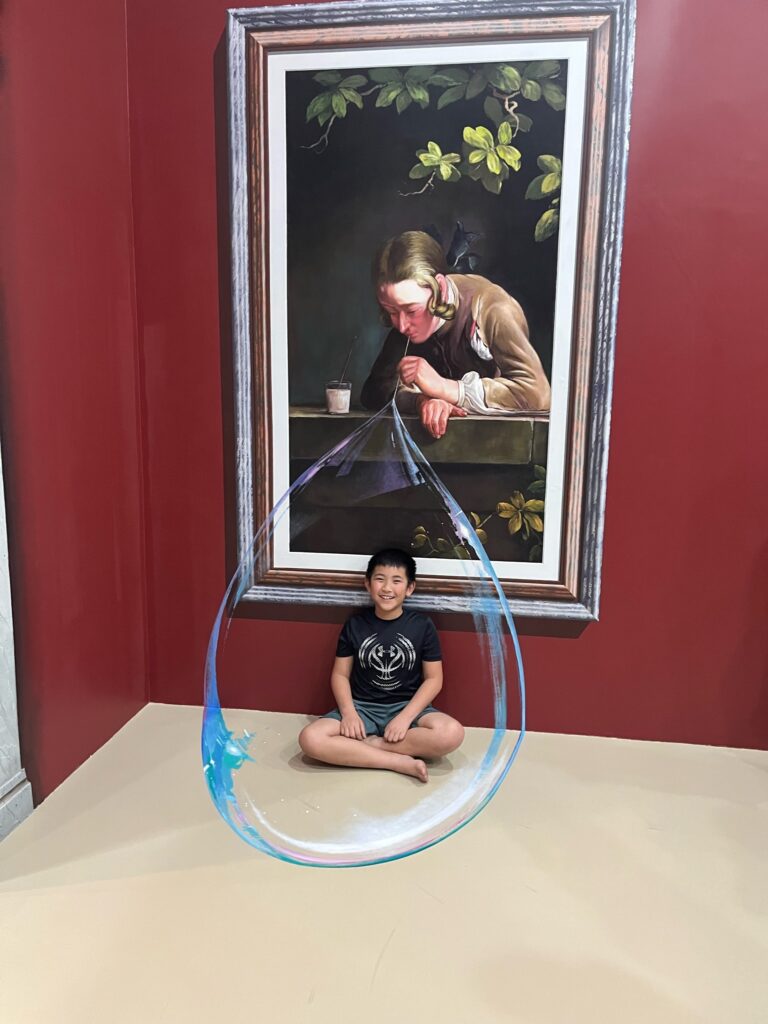
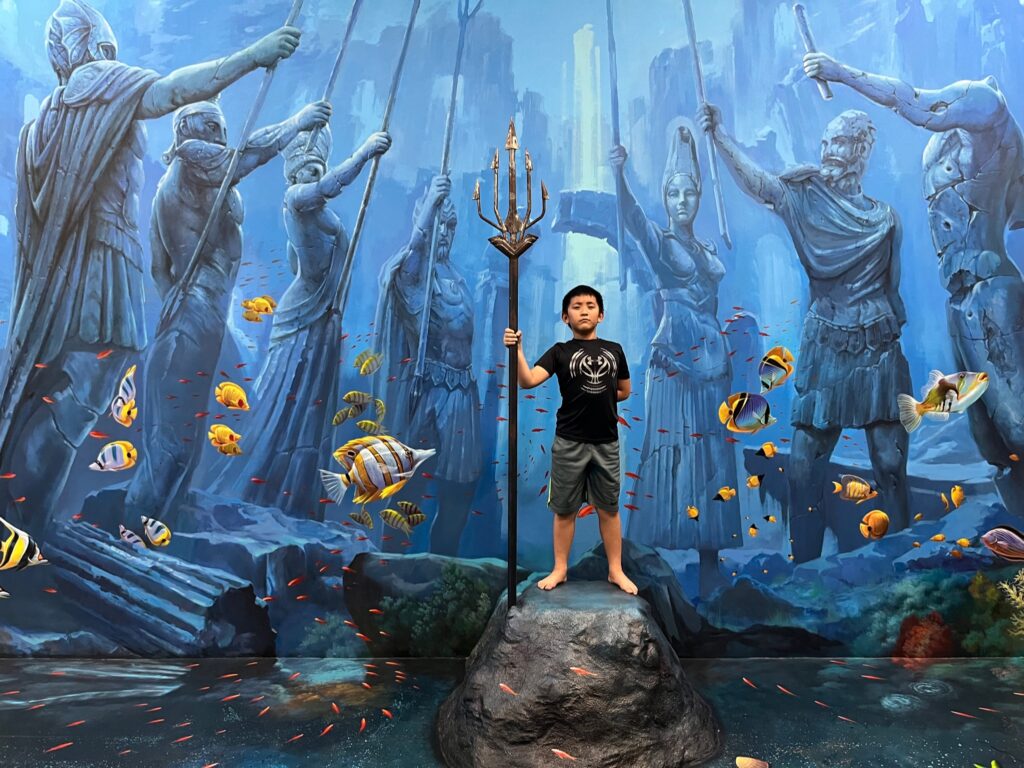
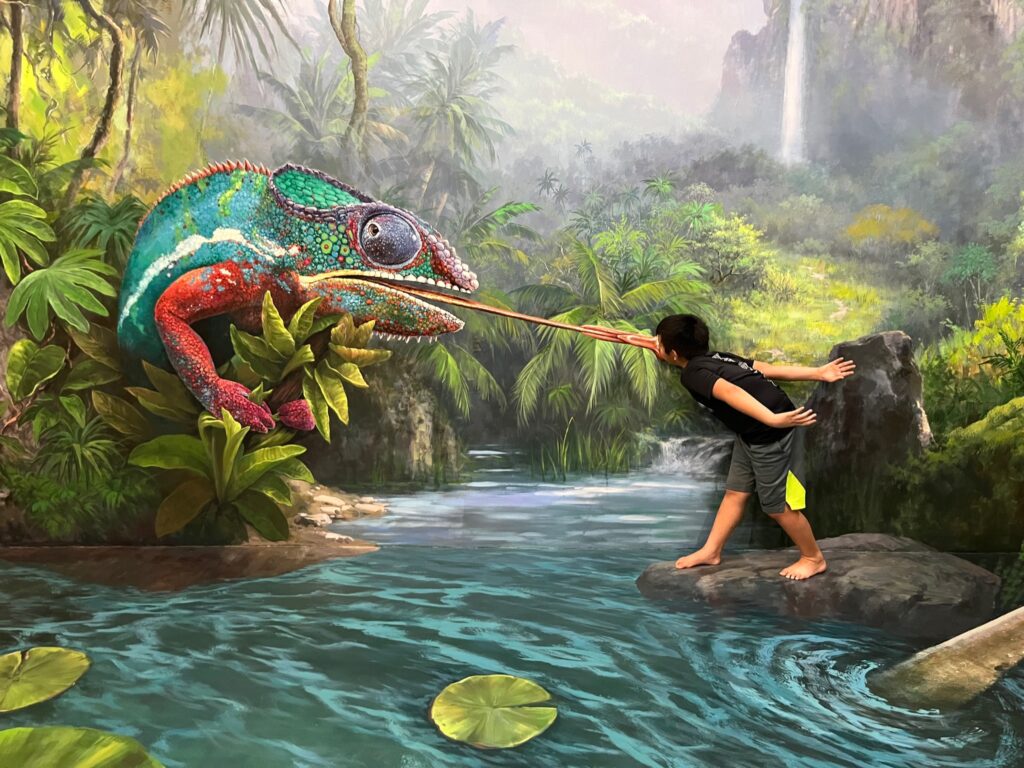
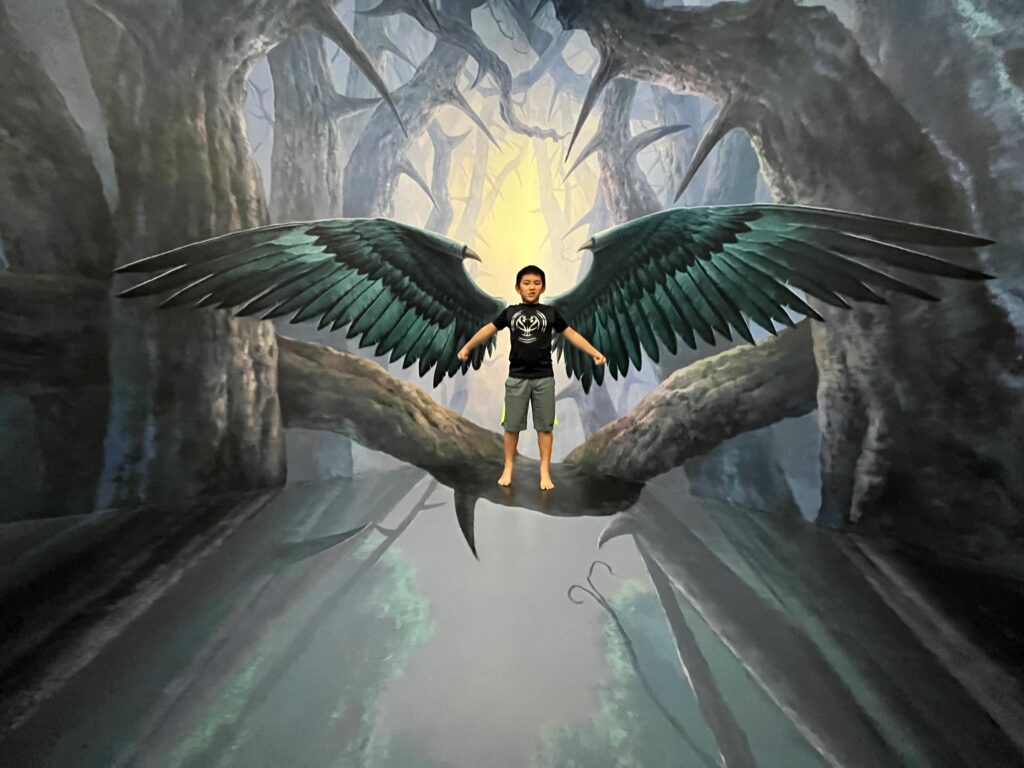
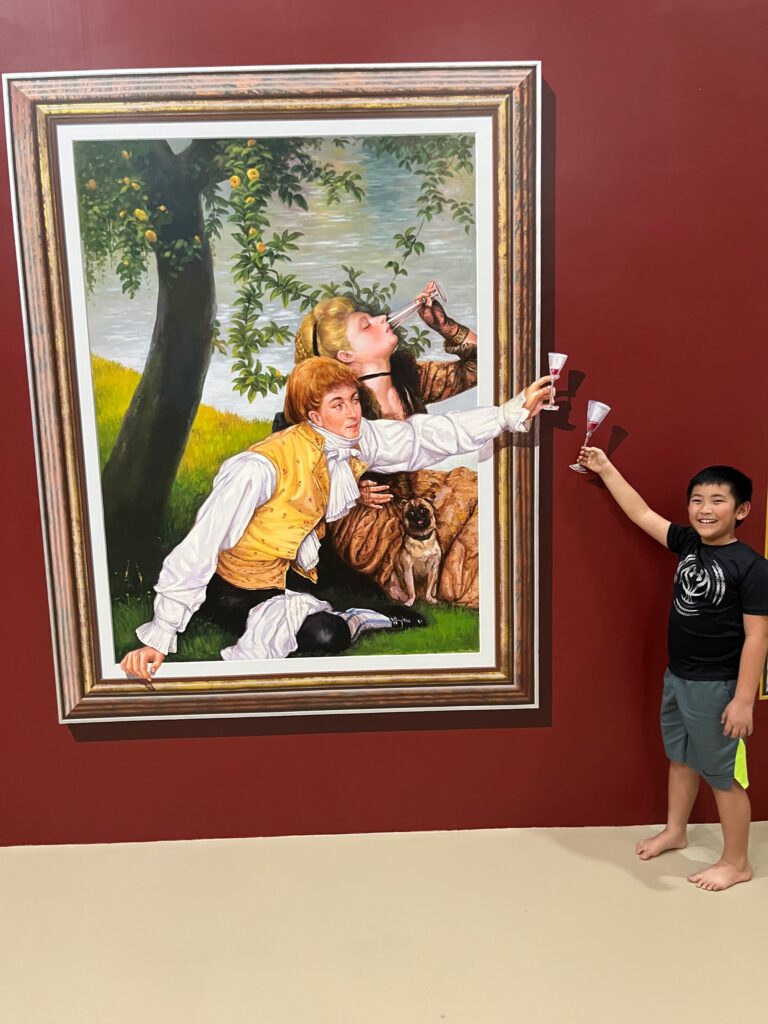
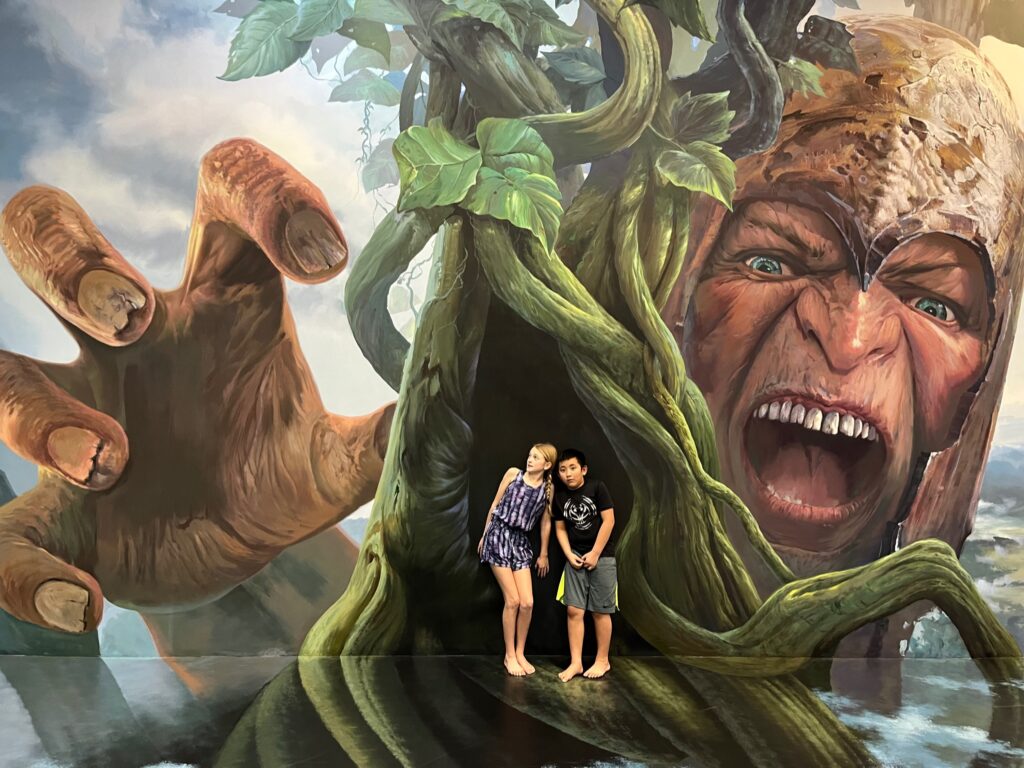
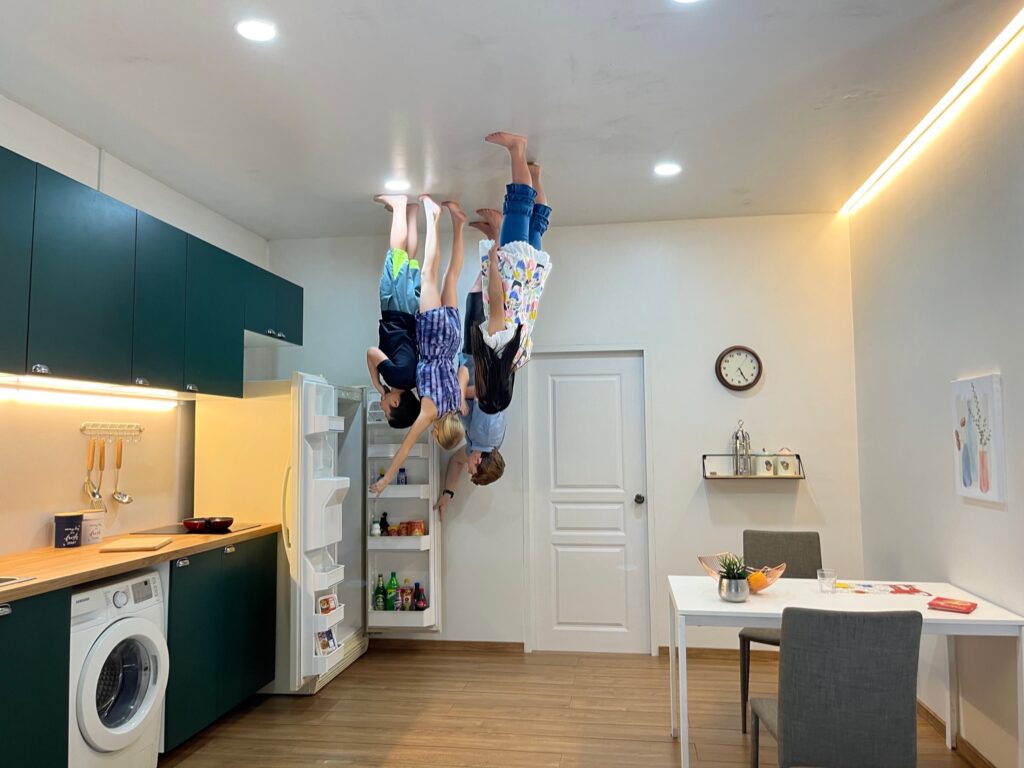
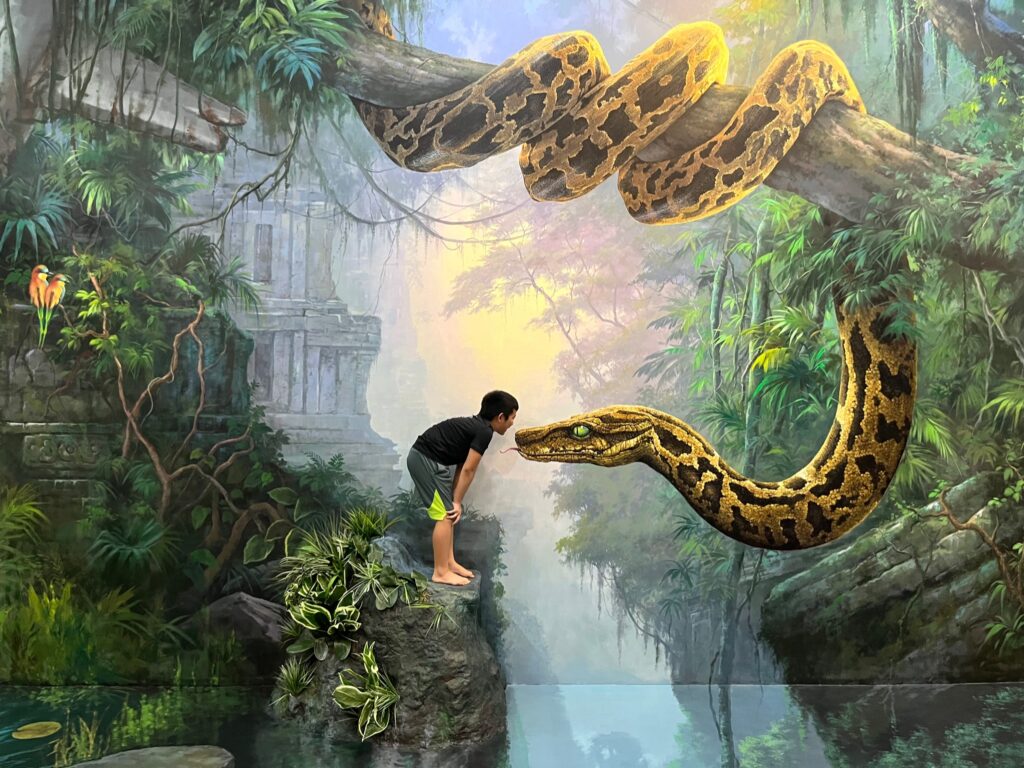
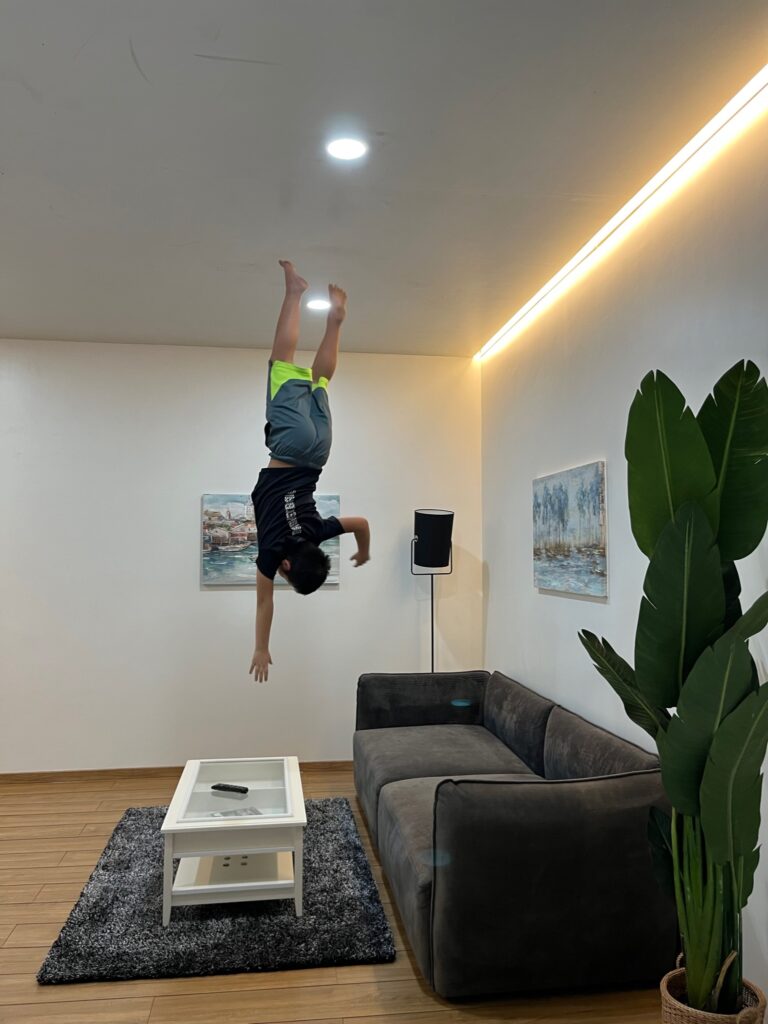

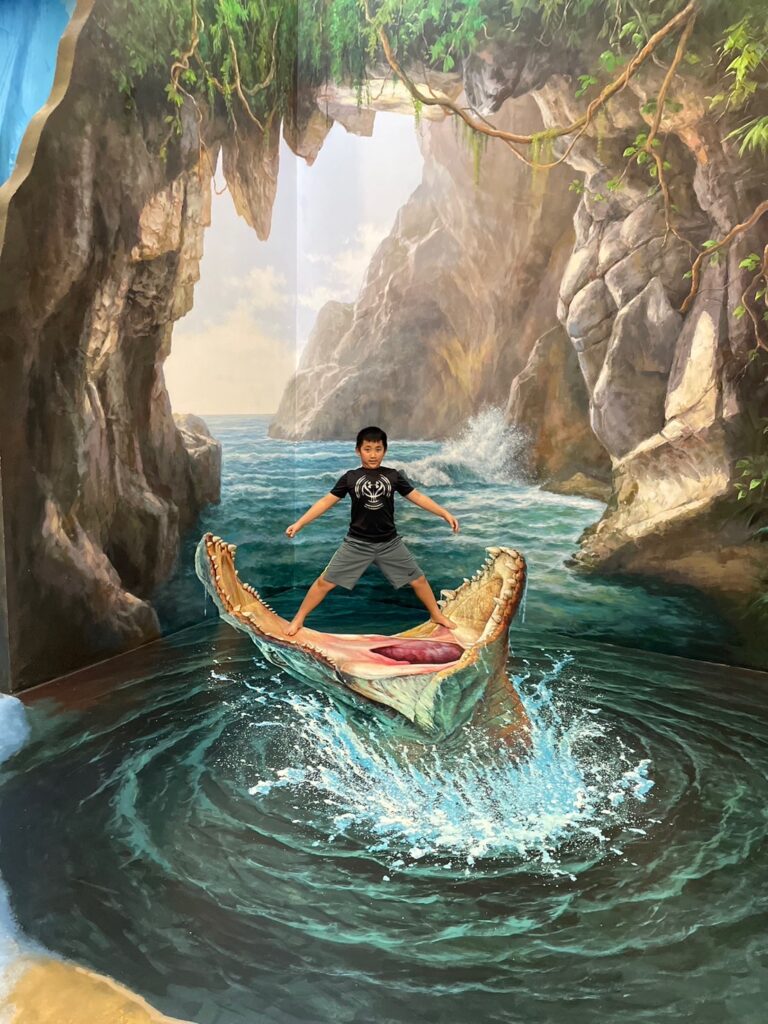

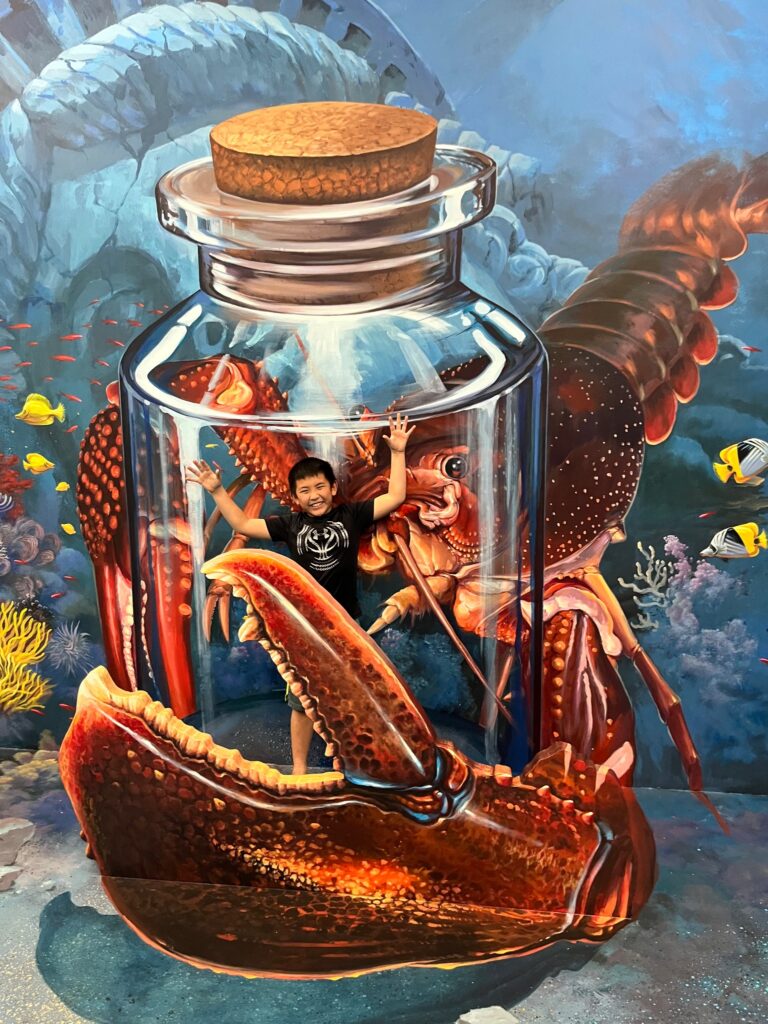
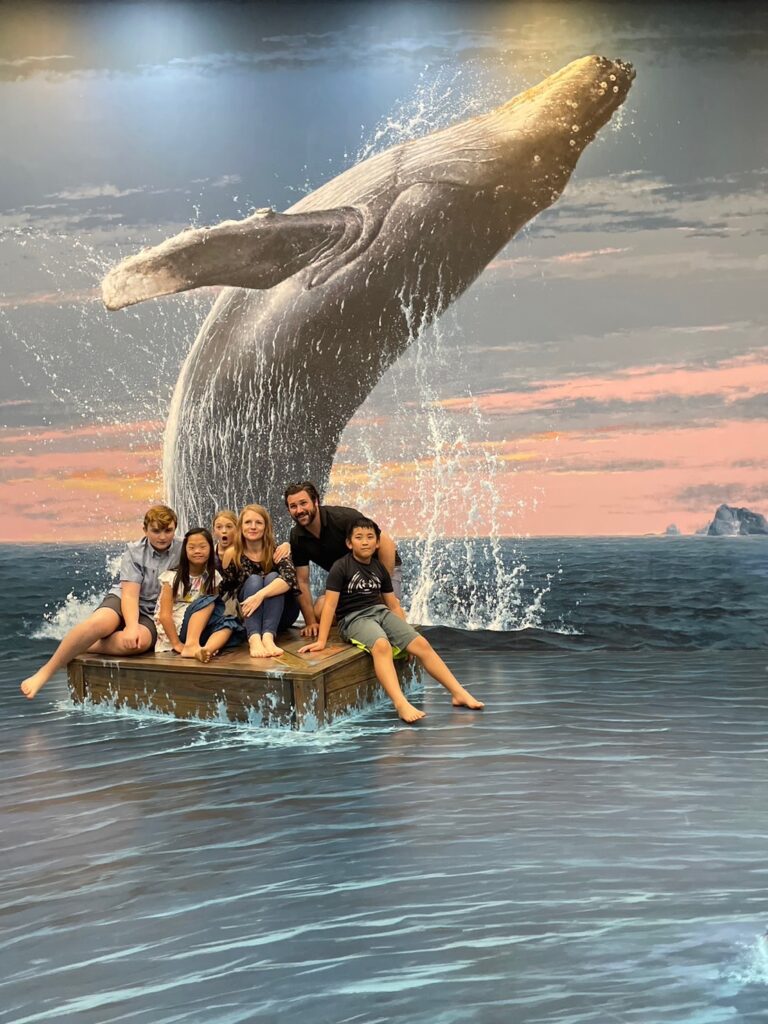
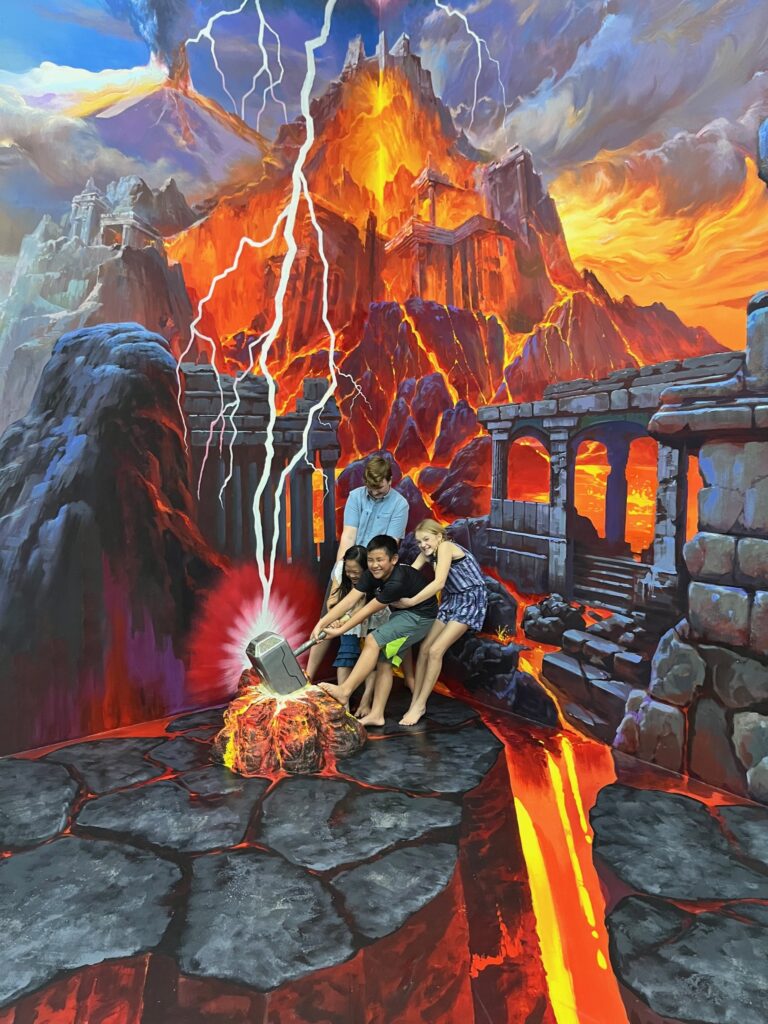
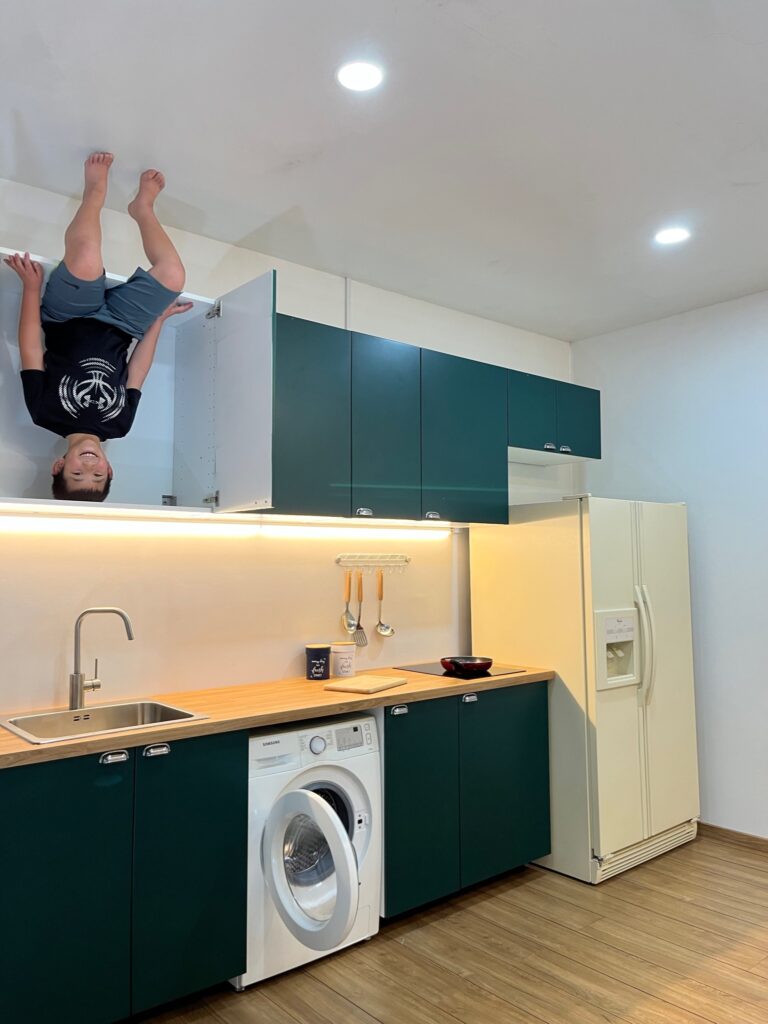
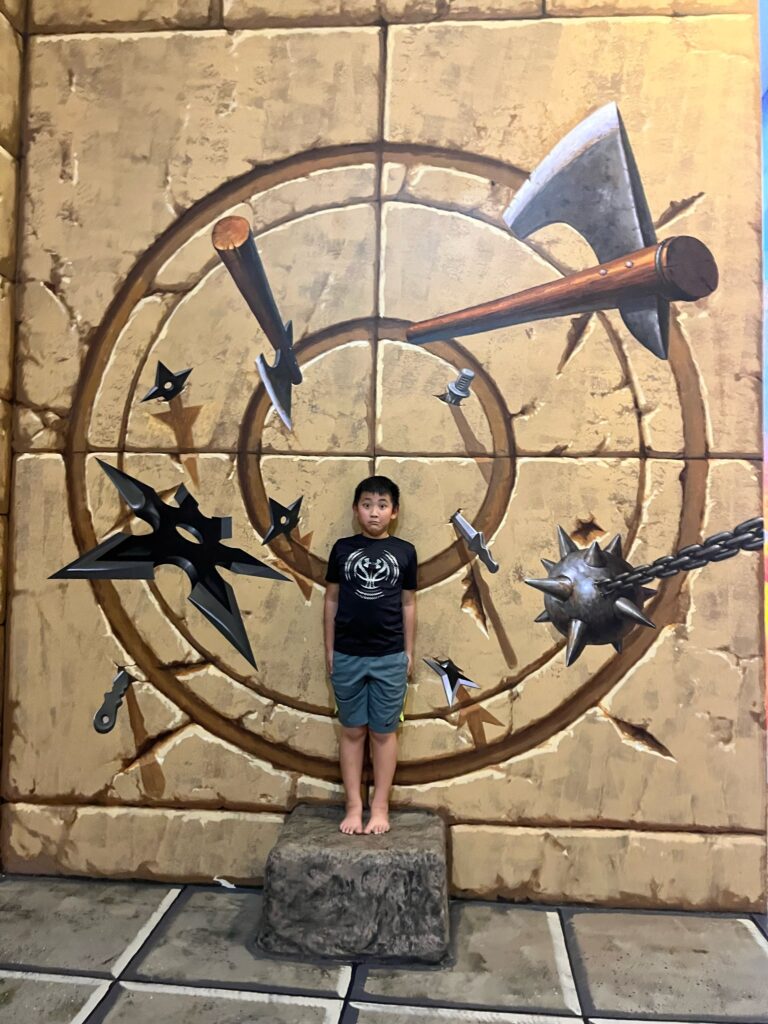
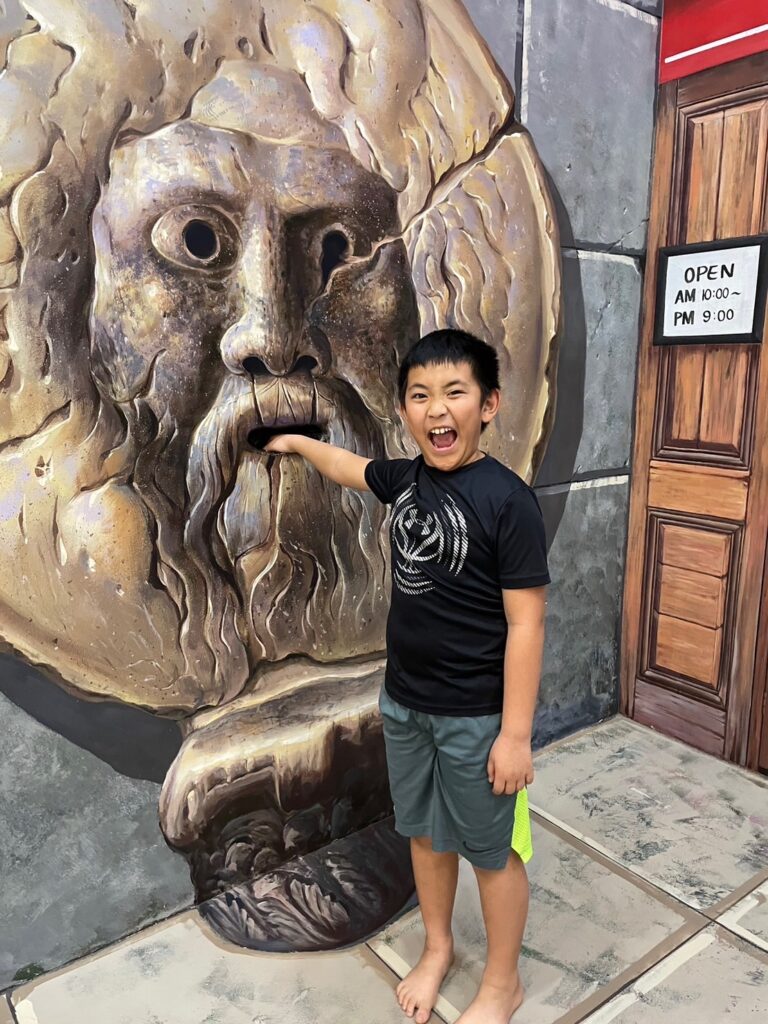
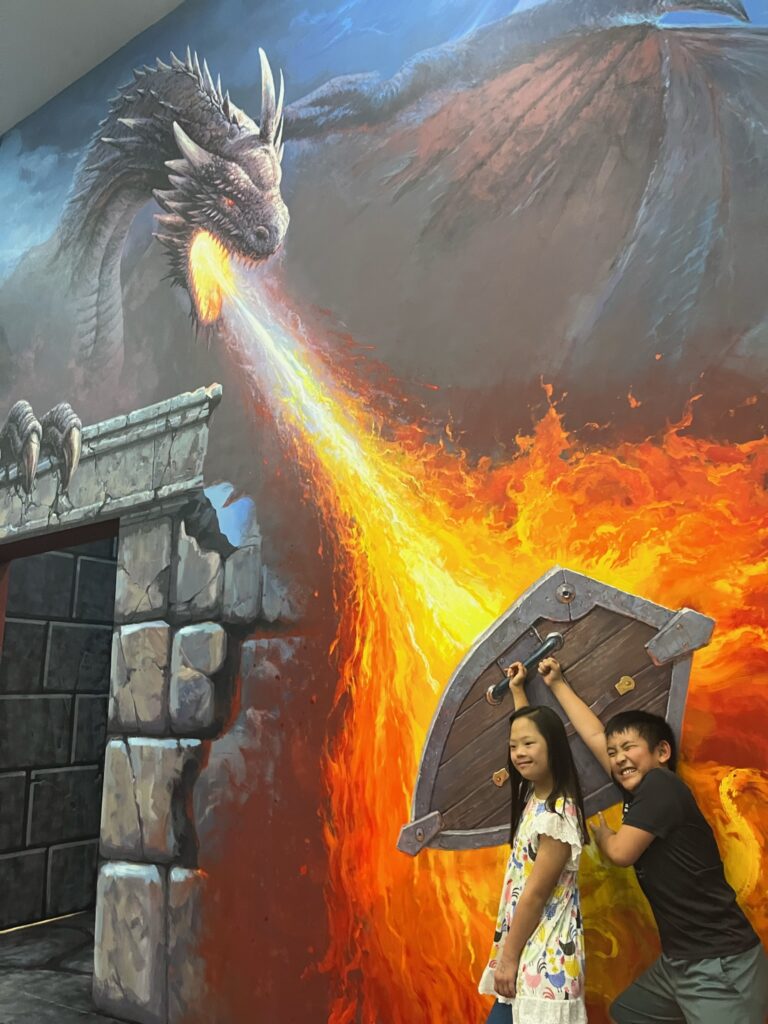
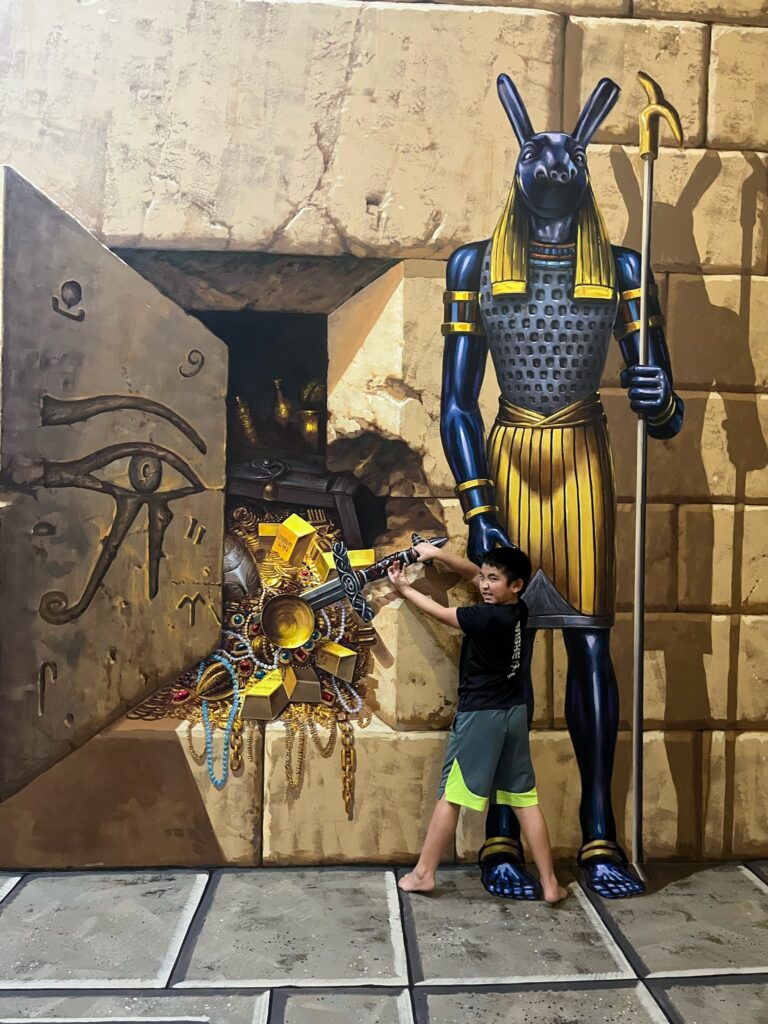
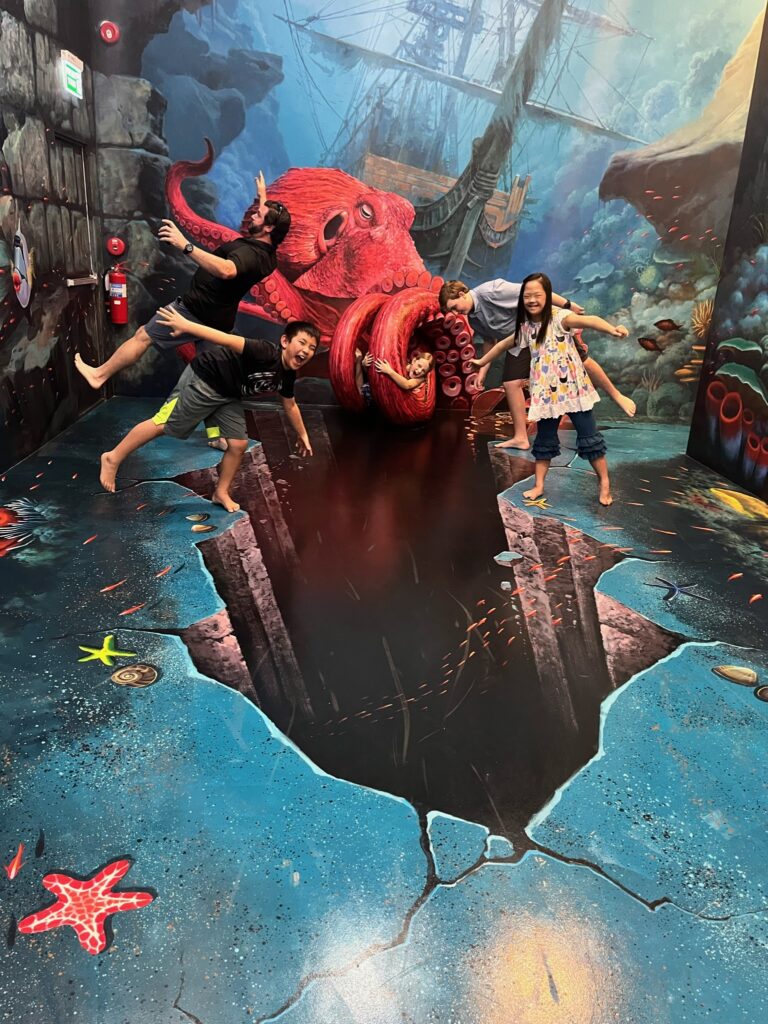
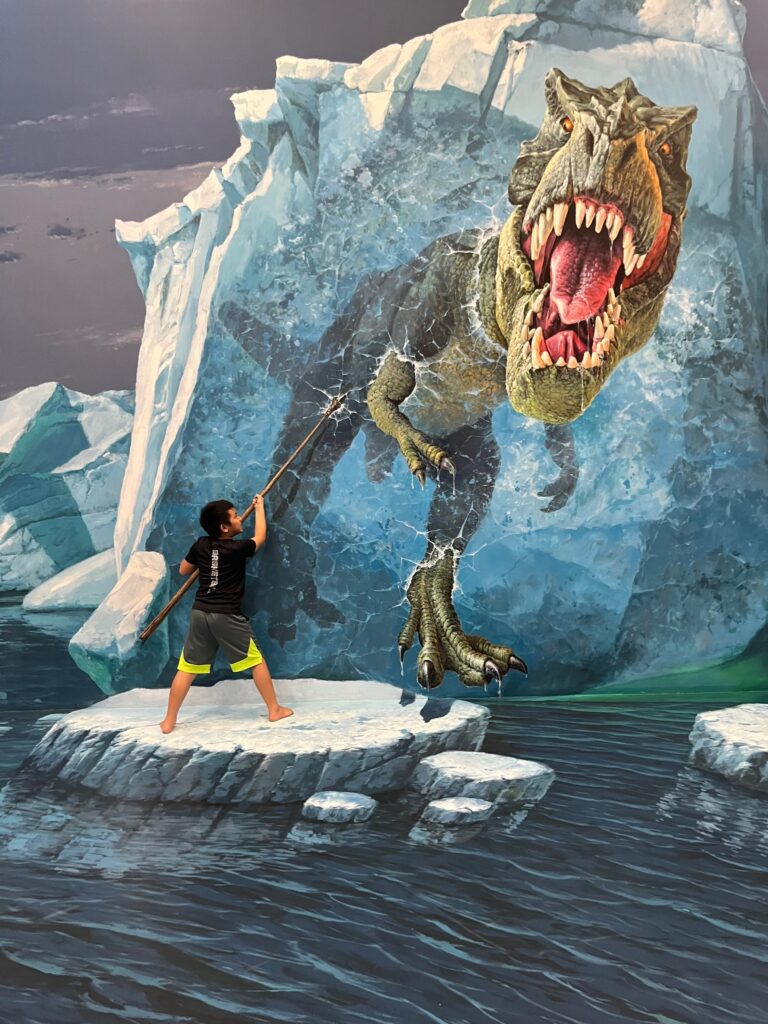
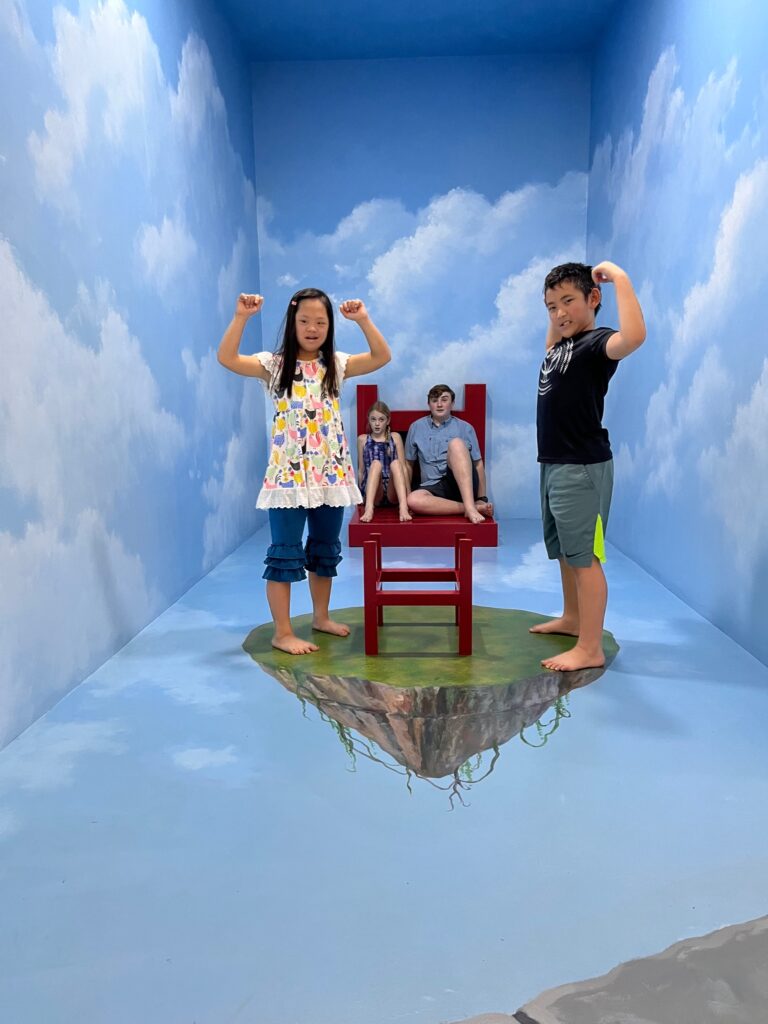
Also, one of the families took us to the zoo with them. It was really fun because we got to rent a golf cart and we saw a whole bunch of cool animals that live in Thailand and other places. Afterwards, we went to this awesome restaurant with an big pretend boat outside and we played tag on it.
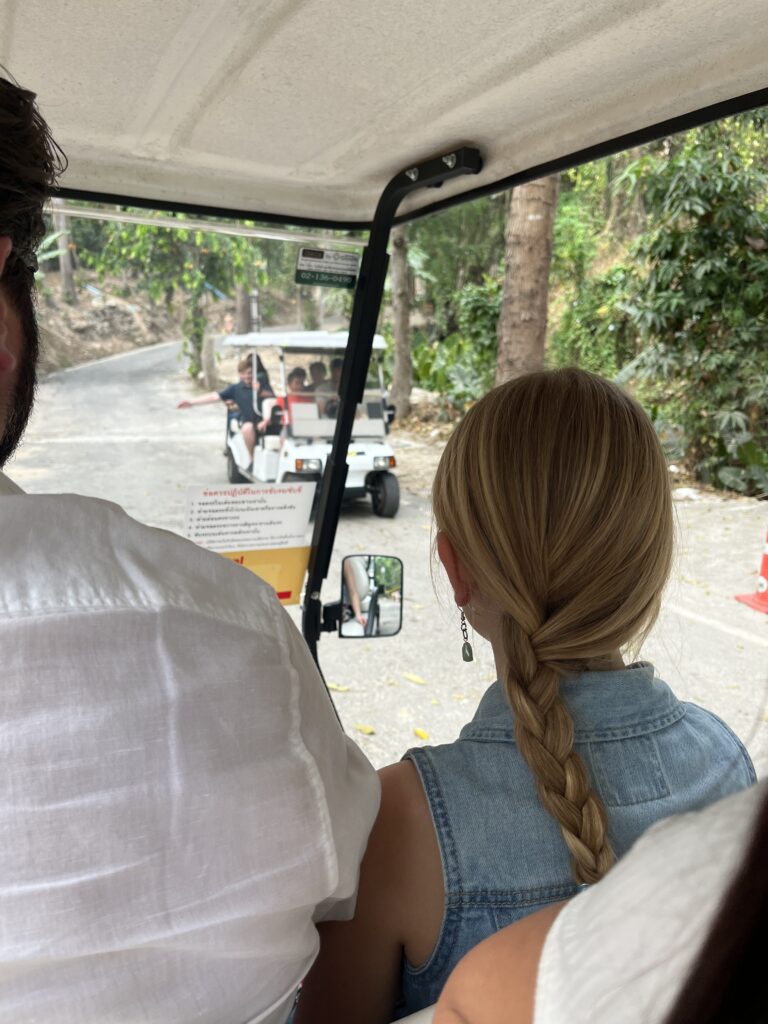
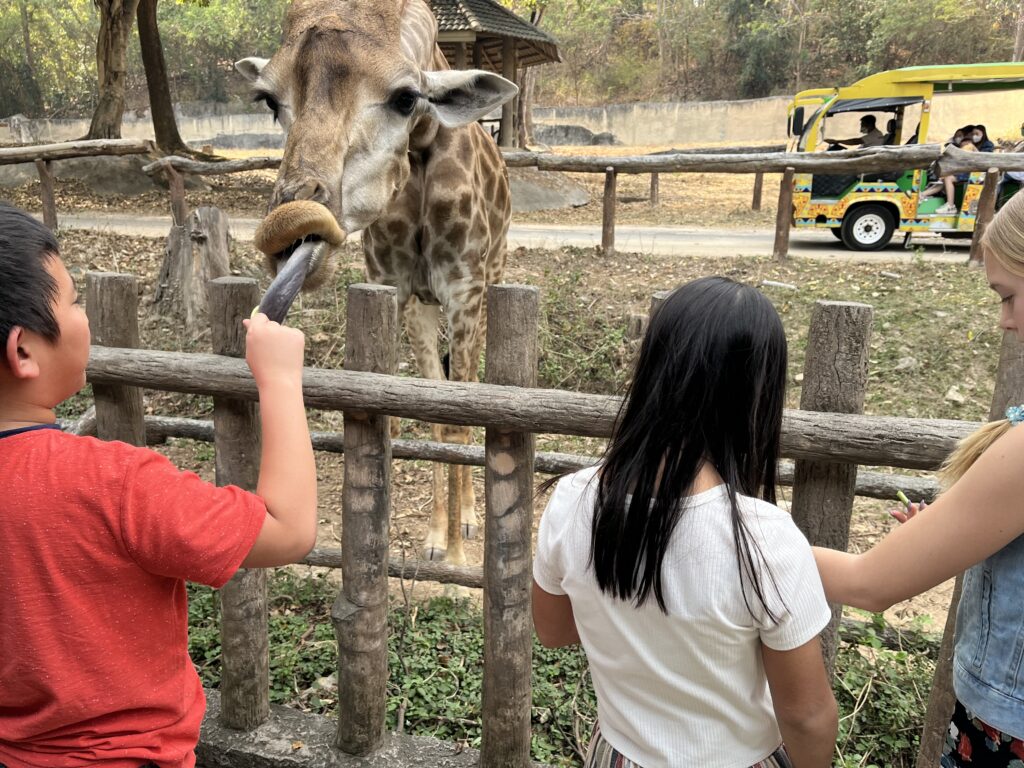
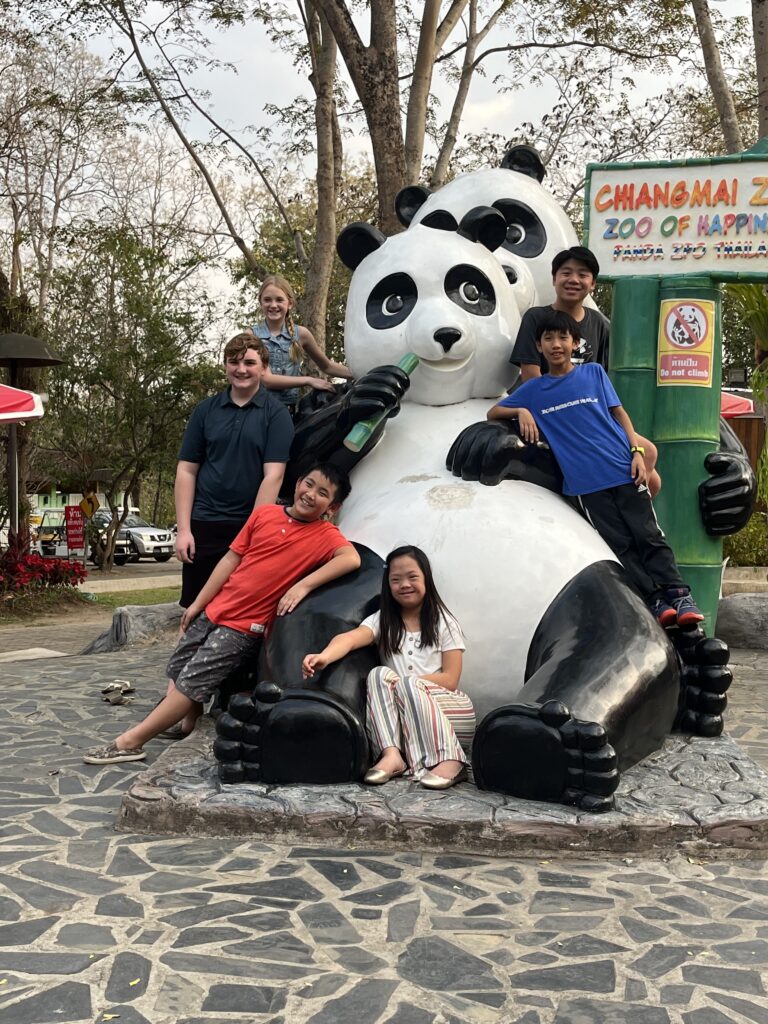
I am really happy we live in Thailand now because my dad is helping ZOE stop child trafficking. I think my dad is doing what God made him to do. I want to support him and do what I can do to help raise money for ZOE so that we can give help to the kids who have been trafficked. My heart makes me feel like I want to help and give them a normal life again, because after being trafficked it would be hard.
THE END
-
How to Spot a Monster
I’ve often wondered with regards to human trafficking, “How do you measure the effectiveness of prevention?” It seems as if there is no metric to know if efforts on the front end have prevented the feared atrocity from occurring in the first place.
On a prevention outreach near the Myanmar border a few months ago, I witnessed first-hand encouraging evidence of the ZOE Prevention Team’s effectiveness at stopping a horror before it begun. In front of an audience nearing a thousand refugee children, The Prevention Team performed a powerful drama. Absent any dialogue, the play showcased how children are often lured into human trafficking and the many subsequent forms of exploitation.
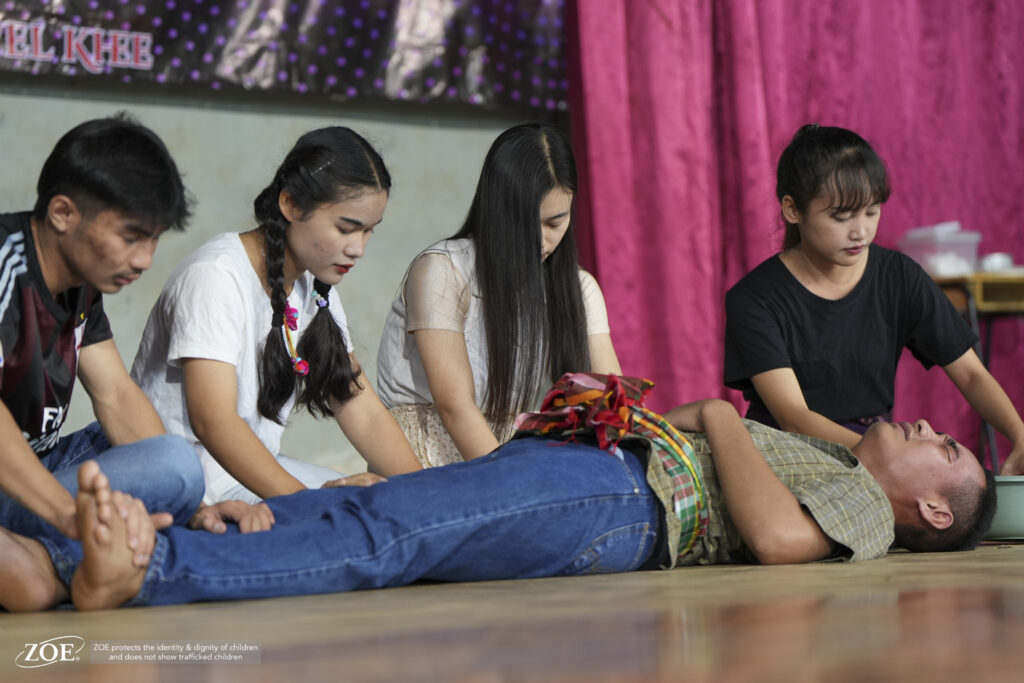
The story began with three happy siblings enjoying their family when tragedy befell their father, now no longer able to care for his children. On stage arrived a well-dressed couple, clearly appearing at a higher socio-economic level than both the pretend children on stage, as well as the actual children in the crowd. The audience vocally cheered at the arrival of these well-to-do folks on stage who appeared as reputable heroes to the tragedy-stricken siblings. The siblings left with the well-dressed duo, in hopes of a future filled with opportunity.
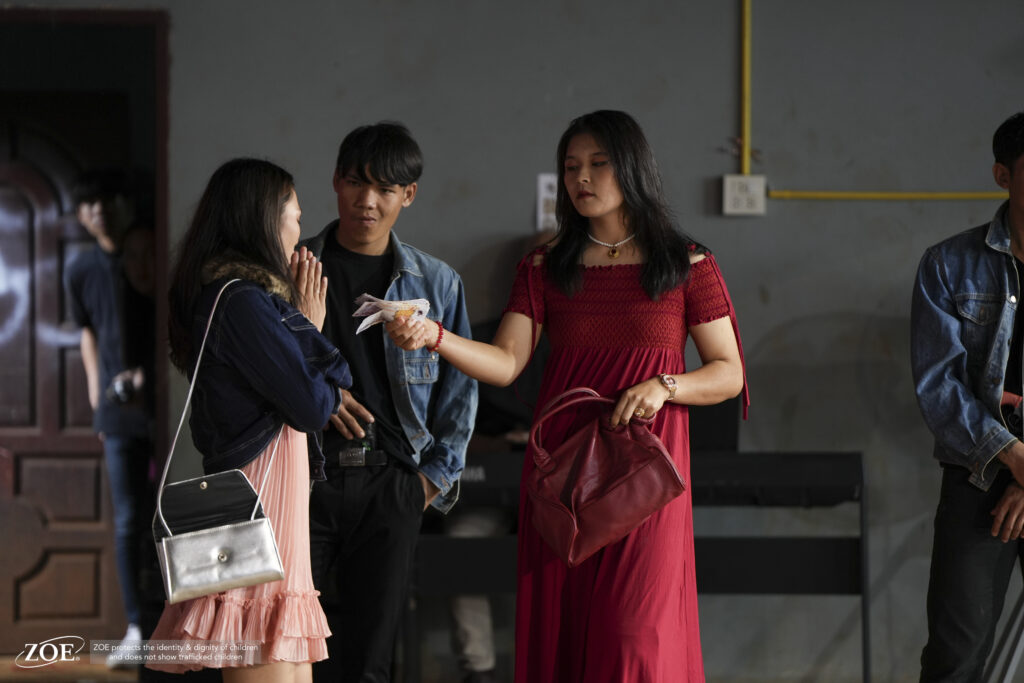
Unbeknownst to the siblings, the couple were paid for introducing the crestfallen kids to an elegant woman in a beautiful, bright-red dress. With make-up, high heels, bundles of cash, and poise, she entered the stage to roaring applause and cheers from the audience. Her presence, demeanor, and attire conveyed power, wealth, and sophistication; attributes seemingly unattainable to the children in the crowd. As the story unfolded, the woman in the red dress was revealed to be not the hero the audience expected, but rather a beautifully dressed monster in disguise. She sold one of the sisters into sexual slavery. The brother was forced into hard labor. The other sister had her eye’s removed for black-market organ sales, was beaten, and forced to beg for money on the street.
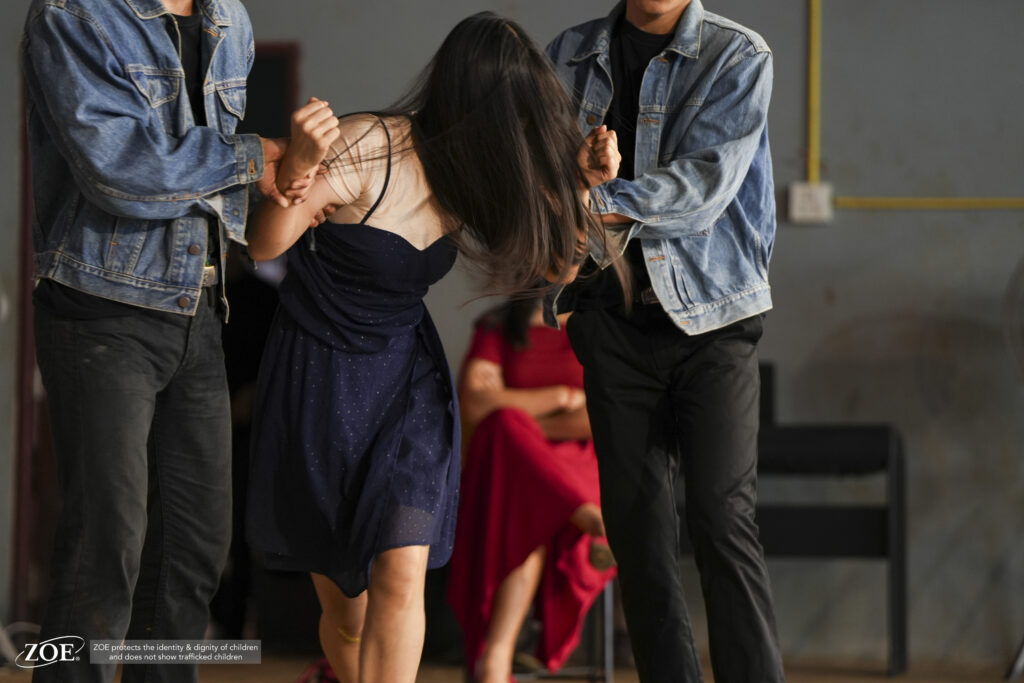
It was an emotionally powerful story. While it is a fictional depiction of the real-life terrors experienced in human trafficking, none of it was exaggerated. As powerful as the drama was for me, the most memorable part was the shift in reaction from the audience. The children in the crowd were incredibly poor. Their lives have been devastated by war, poverty, brokenness, and difficulty. Tragically, pain and hardship are much of all they know. Seeing the classy, well dressed, and sophisticated actors on stage garnered an immediate reaction of ovation and approval. But as the story unfolded, the true character and motivations of those face-value heroes was unveiled and the audience’s adulations diminished. Their former applause turned to silence. Their cheers switched to gasps. Children looked away and others covered their mouths in astonishment. The apparent heroes were the actual villains. I was able to watch these children recognize there was more than meets the eye.
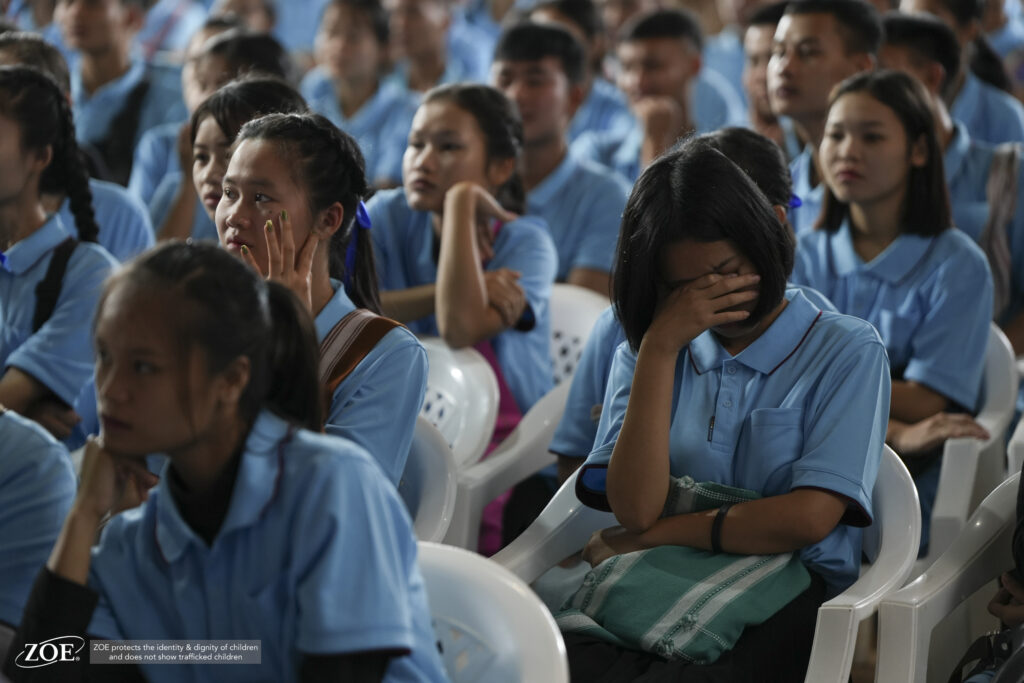
The truth remains, it is incredibly difficult to objectively measure the effectiveness of prevention. But if what I witnessed was any indication, those school children are now far more aware of the real-life predators actively looking for them, seeking to cause harm and destruction, desiring to take advantage of their innocence.
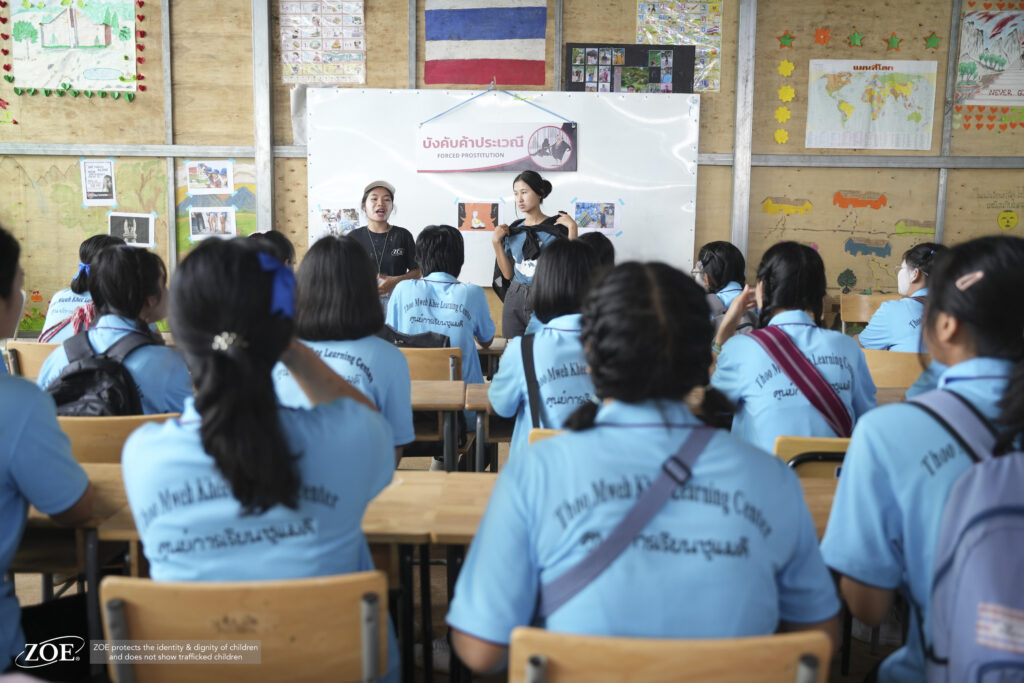
The rest of the outreach was filled with fun training, resources and techniques to help keep those kids safe. As the adage goes, an ounce of prevention is worth more than a pound of cure.
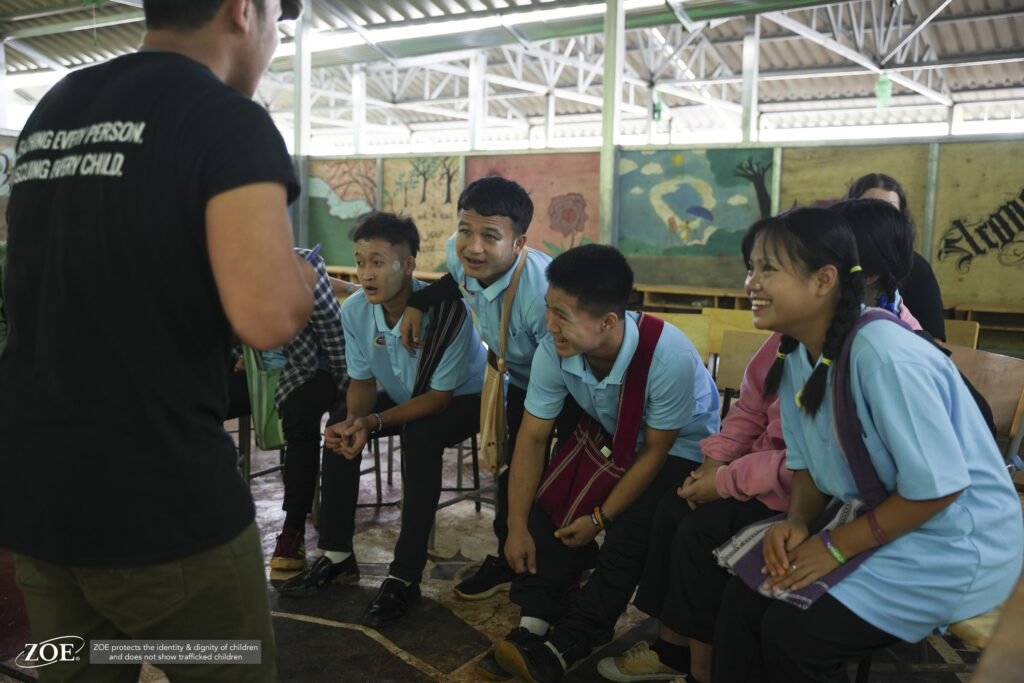
Helping these kids navigate life with the cards they’ve been dealt is worth all our efforts and attention, while simultaneously praying they’re never in a position requiring rescue.
